Contact:
Jana.Marelova@vscht.cz
Tel. 220 446 111
stdClass Object
(
[nazev] => Technopark Kralupy
[adresa_url] =>
[api_hash] =>
[seo_desc] =>
[jazyk] =>
[jednojazycny] =>
[barva] =>
[indexace] =>
[obrazek] =>
[ga_force] =>
[cookie_force] =>
[secureredirect] => 1
[google_verification] =>
[ga_account] =>
[ga_domain] =>
[ga4_account] =>
[gtm_id] =>
[gt_code] =>
[kontrola_pred] =>
[omezeni] =>
[pozadi1] =>
[pozadi2] =>
[pozadi3] =>
[pozadi4] =>
[pozadi5] =>
[robots] =>
[htmlheaders] =>
[newurl_domain] => 'www.technopark-kralupy.cz'
[newurl_jazyk] => 'en'
[newurl_akce] => '[en]'
[newurl_iduzel] =>
[newurl_path] => 8549/7608/25473
[newurl_path_link] => Odkaz na newurlCMS
[iduzel] => 25473
[platne_od] => 05.04.2022 08:54:00
[zmeneno_cas] => 05.04.2022 08:54:38.61403
[zmeneno_uzivatel_jmeno] => Jan Kříž
[canonical_url] =>
[idvazba] => 32312
[cms_time] => 1713864198
[skupina_www] => Array
(
)
[slovnik] => stdClass Object
(
[logo_href] => /
[logo] =>  [paticka_adresa] => Technopark Kralupy
[paticka_adresa] => Technopark Kralupy
Náměstí G. Karse 7/2
Kralupy nad Vltavou
278 01
info@technopark-kralupy.cz
[paticka_odkaz_mail] => mailto:info@technopark-kralupy.cz
[copyright] => © 2017 Technopark Kralupy
[drobecky] => You are here: UCT Prague - Technopark Kralupy
[stahnout] =>
[prilohy] =>
[google_search] => 011624207255538609363:zhpxb6kqnrc
[preloader] =>
[logo_mobile_href] =>
[logo_mobile] =>
[social_fb_odkaz] =>
[social_tw_odkaz] =>
[social_yt_odkaz] =>
[mobile_over_nadpis_menu] =>
[mobile_over_nadpis_search] =>
[mobile_over_nadpis_jazyky] =>
[mobile_over_nadpis_login] =>
[menu_home] =>
[aktualizovano] =>
[autor] =>
[zobraz_desktop_verzi] =>
[social_fb_title] =>
[social_tw_title] =>
[social_yt_title] =>
[intranet_odkaz] =>
[intranet_text] =>
[more_info] =>
[zobraz_mobilni_verzi] =>
[nepodporovany_prohlizec] =>
[social_in_odkaz] =>
[den_kratky_2] =>
[archiv_novinek] =>
[novinky_servis_archiv_rok] =>
[novinky_kategorie_1] =>
[novinky_kategorie_2] =>
[novinky_kategorie_3] =>
[novinky_kategorie_4] =>
[novinky_kategorie_5] =>
[novinky_archiv_url] =>
[novinky_servis_nadpis] =>
[novinky_dalsi] =>
[hledani_nadpis] => hledání
[hledani_nenalezeno] => Nenalezeno...
[hledani_vyhledat_google] => vyhledat pomocí Google
[social_li_odkaz] =>
)
[poduzel] => stdClass Object
(
[25474] => stdClass Object
(
[obsah] =>
[poduzel] => stdClass Object
(
[25612] => stdClass Object
(
[obsah] =>
[iduzel] => 25612
[canonical_url] => //www.technopark-kralupy.cz
[skupina_www] => Array
(
)
[url] =>
[sablona] => stdClass Object
(
[class] =>
[html] =>
[css] =>
[js] =>
[autonomni] =>
)
)
[25610] => stdClass Object
(
[obsah] =>
[iduzel] => 25610
[canonical_url] => //www.technopark-kralupy.cz
[skupina_www] => Array
(
)
[url] =>
[sablona] => stdClass Object
(
[class] =>
[html] =>
[css] =>
[js] =>
[autonomni] =>
)
)
)
[iduzel] => 25474
[canonical_url] =>
[skupina_www] => Array
(
)
[url] =>
[sablona] => stdClass Object
(
[class] =>
[html] =>
[css] =>
[js] =>
[autonomni] =>
)
)
[25476] => stdClass Object
(
[obsah] =>
[poduzel] => stdClass Object
(
[48830] => stdClass Object
(
[nazev] => Testing of adhesion and long-term stability of adhesives
[seo_title] => Adhesives
[seo_desc] => Testing of adhesion and long-term stability of adhesives
[autor] =>
[autor_email] =>
[perex] => Adhesive bonding has attracted more and more attention in recent years and its share across industry (automotive, construction, etc.) is increasing. This is mainly due to the good mechanical properties and low technological demands of bonding compared to conventional methods such as welding.
Adhesive bonding is a method of material bonding using adhesive, where a permanent, non-detachable joint is formed.
An adhesive is a substance that has the ability to bond two surfaces based on adhesion and its own cohesion. Adhesion and cohesion are thus essential properties defining the substance as an adhesive.
Adhesion of the adhesive to the surface is based on the molecular structure of the adhesive and results from the action of physical, chemical and intermolecular bonding forces. Several models have been developed for the description of adhesion:
Cohesion of the adhesive is related to the intermolecular and valence forces in the adhesive structure. The amount of energy required to pull the adhesive particle out of the structure is characterized by decohesive energy.
Adhesive bonding is at present a fully-fledged alternative to other materials bonding techniques. The main advantages are:
Disadvantages of adhesive joints are above all in the necessity of a proper surface preparation and precise compliance to the recommended procedure, including the need to fix the bonded materials until the adhesive cures in the joint. Service life of the joint also depends heavily on the environment and temperature. Factors affecting the quality and functionality of the adhesive joint can be divided into three categories:
|
Material |
Adhesive |
Conditions |
|
• surface geometry • wettability • surface cleanliness • solubility • swelling • thermal expansion |
• degree of polymerization • viscosity • homogeneity • pH • volume stability • structure and composition of the filler |
• construction of the joint • surface treatment • application of the adhesive • pressure and fixation • cure conditions |
Notes to selected factors:
A wide range of adhesives and adhesive systems currently available can be sorted by a variety of aspects and properties:
Evaluation of bonded joints properties
Properties of bonded joints are determined by a range of procedures and tests:
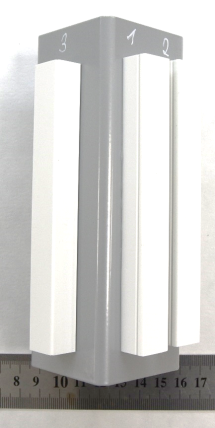 |
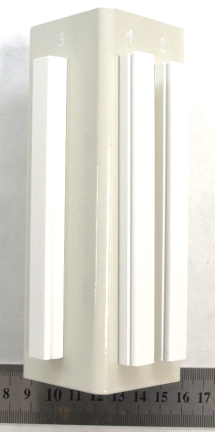 |
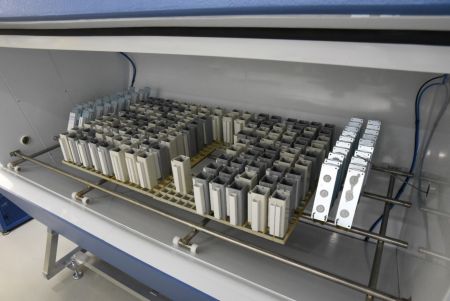
Exposure of samples with bonded joints in corrosion chamber
Technopark Kralupy currently offers testing according to the following standards:
ISO 4624 Paints and varnishes – Pull-off test for adhesion. It is a quantitative evaluation of the coating adhesion to a metallic substrate. The coating can be tested in cured form or after exposure test, e.g. accelerated corrosion test VW P1210 or after degradation of the organic coating by ultraviolet or broad-spectrum light.
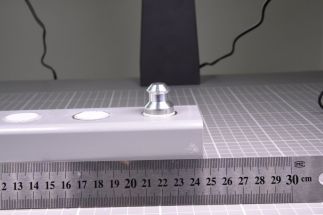 |
|
Sample preparation for pull-off test according to ISO 4624
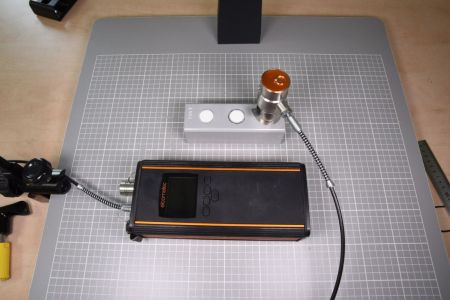
Device for pull-off test according to ISO 4624
ISO 9142 Adhesives – Guide to the selection of standard laboratory ageing conditions for testing bonded joints. Test for degradation of bonded joints in various configurations:
Tests of bonded assemblies – test of the strength of a bonded joint under mechanical load. The test can be done in several configurations:
EN 1465 Adhesives – Determination of tensile lap-shear strength of bonded assemblies. Test to assess the mechanical strength of a bonded joint under shear mechanical loading.
ISO 4587 Adhesives – Determination of tensile lap-shear strength of rigid-to-rigid bonded assemblies.
ISO 10365 Adhesives – Designation of main failure patterns. Regulation defining the type of failure at various interfaces (adhesion), in the bonded material (decohesion), etc.
ISO 175, ISO 291, ISO 483 – Tests of chemical resistance. Mostly immersion tests to assess the resistance to chemicals in liquid form.
ISO 4892-1, ISO 4892-2, ISO 4892-3 – Radiation degradation tests. Tests of degradation of plastics in broad-spectrum radiation, which corresponds to the spectrum of solar radiation or in the narrow spectrum of UV (UV-A, UV-B) radiation. Critical test to assess the resistance of adhesives, especially in exteriors. For more information, see the climatic tests.
Literature:
Petrie, E. M. Handbook of Adhesives and Sealants, 1st ed.; McGraw Hill Professional, 1999.
Pizzi, A., Mittal, K. L., Eds. Handbook of Adhesive Technology, 2nd ed.; Marcel Dekker, Inc.: New York, 2003.
Technopark Kralupy is a spin-off of The University of Chemistry and Technology Prague serving the Czech and international industry in the field of building chemistry and similar subjects since 2015.
Department of Metallic Construction Materials
Technopark Kralupy of the University of Chemistry and Technology Prague
Technopark Kralupy VŠCHT Praha
Náměstí G. Karse 7
278 01 Kralupy nad Vltavou
Czech Republic
kovy@technopark-kralupy.cz
Phone: +420 220 446 104, +420 723 242 413
© 2017–2024 Technopark Kralupy
[ikona] => [obrazek] => [ogobrazek] => [pozadi] => [obsah] => [urlnadstranka] => [iduzel] => 48830 [canonical_url] => [skupina_www] => Array ( ) [url] => /adhesives [sablona] => stdClass Object ( [class] => stranka [html] => [css] => [js] => [autonomni] => 1 ) ) [76514] => stdClass Object ( [nazev] => [seo_title] => ALCOAT PROJECT [seo_desc] => Recycled aluminium alloy coatings with chemically tailored electrochemical potential for safe protection of steel structures [autor] => [autor_email] => [obsah] =>← Home | ALCOAT in a nutshell | → How do we do that | → Expected outcome | → Team | → Further information | → Contact
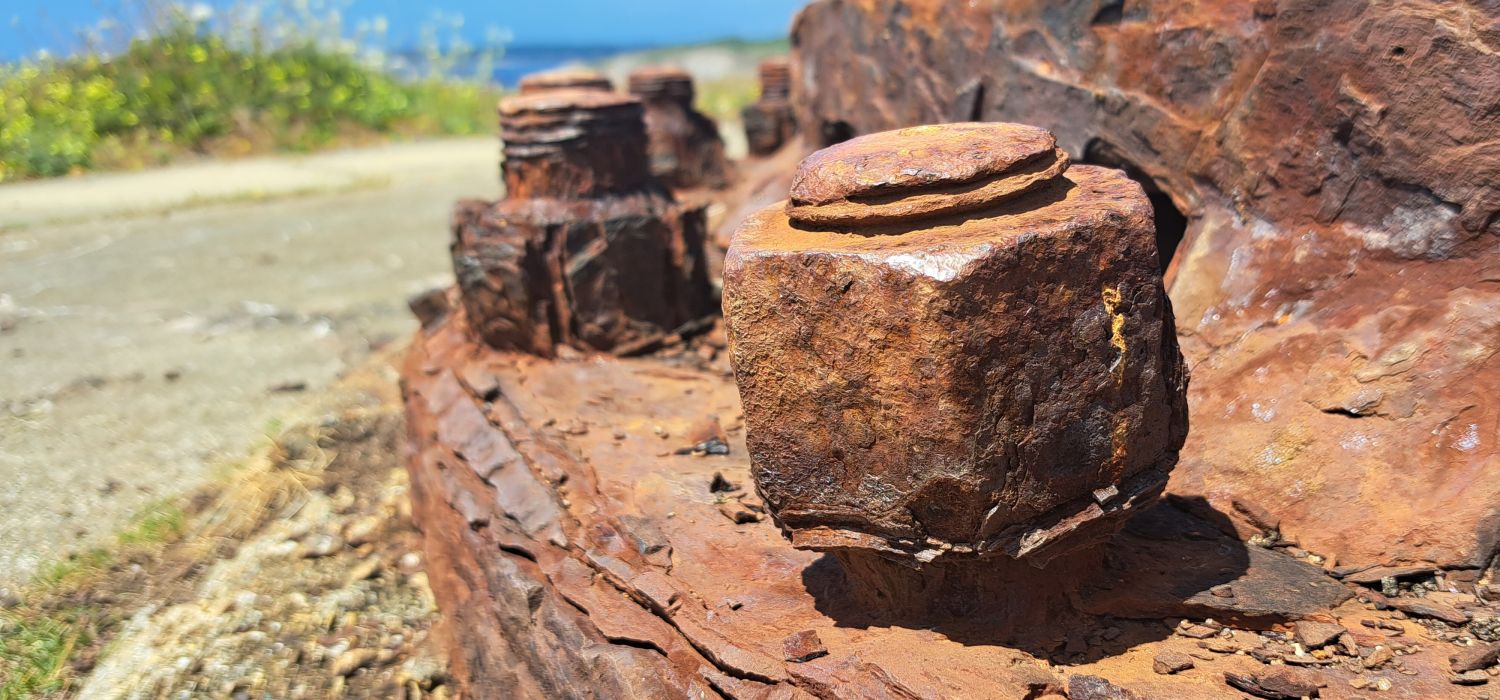
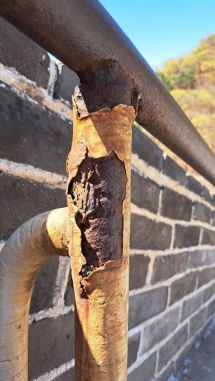
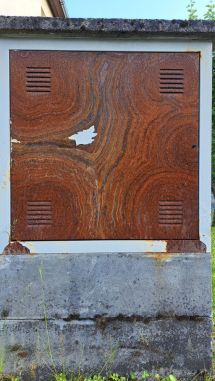
Recycled aluminium alloy coatings with chemically tailored electrochemical potential for safe protection of steel structures
We aim to develop new families of aluminium-based coatings from aluminium scrap for the protection of steel.
|
|
|
|
|
|
|
The concept is schematically shown below. |
|
|
← Home | ALCOAT in a nutshell | → How do we do that | → Expected outcome | → Team | → Further information | → Contact
[urlnadstranka] => [ogobrazek] => [pozadi] => [iduzel] => 76514 [canonical_url] => [skupina_www] => Array ( ) [url] => /alcoat [sablona] => stdClass Object ( [class] => stranka [html] => [css] => [js] => [autonomni] => 1 ) ) [63615] => stdClass Object ( [nazev] => Analysis of materials using computed microtomography [seo_title] => Analysis of materials using computed microtomography [seo_desc] => [autor] => [autor_email] => [obsah] =>Summary of all activities of Metallic Construction Materials group is here.
Computed tomography is a non-destructive imaging method capable of creating a 3D model of the scanned object showing its external and internal structure. X-ray passes through the scanned object to the detector and is partially absorbed. Information about the scanned object is obtained based on the amount of absorbed radiation. A large number of these projections are made, and the sample is gradually rotated after the individual images are taken until a 360° rotation is achieved. Individual sections of the material and a 3D model composed of groups of points, so-called voxels, are then created by the mathematical composition of the obtained data.
X-ray absorbance depends on the density of the material. Less dense materials with a lower proton number absorb only a smaller fraction of X-rays and appear dark in the images. Denser materials with a high proton number absorb X-rays more and, on the contrary, appear bright in the images. In order for the radiation to penetrate through materials with higher absorbance, it is necessary to apply a higher electrical voltage during its generation, which broadens the spectrum of X-ray radiation and achieves a higher penetration ability.
Equipment
The Diondo d2 microtomograph, which is available in the Technopark Kralupy, is capable of scanning at a resolution of up to 2 μm. It is equipped with a transmission tube capable of working at a voltage of up to 225 kV, a flat detector with a size of 417 × 417 mm, and a rotary table with a load capacity of up to 20 kg. The VGStudio 3.4. program is used for data processing.
|
|
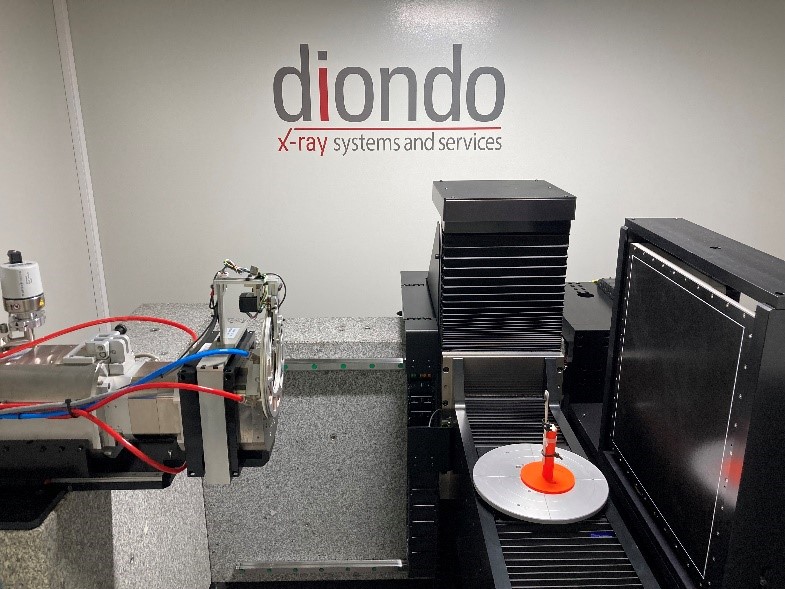 |
| Microtomograph Diondo d2 | Interior of Diondo d2 microtomograph |
Computed microtomography has a wide range of applications in the analysis of the internal structure of a material. The non-destructive nature and relatively short measurement time, combined with the universality for different types of materials, make this method interesting for various applications in material research.
The size of the sample that can be observed depends on the type of material. Samples from light materials (e.g., polymers) can have a thickness of up to 20 cm in full cross-section, while for example steel samples can only be examined at a thickness of less than 2 cm in full cross-section due to their higher absorbance. Approximate values of maximum material thicknesses are summarized in the table below.
|
Material |
Maximal thickness [mm] |
|
Polymer |
220 |
|
Aluminium |
120 |
|
Light ceramics |
140 |
|
Steel |
20 |
With the help of microtomography, internal material defects can be visualized with relatively high accuracy and their size and morphology can be described. These defects include cracks, shrinkage, pores, cavities, etc. Software tools for data processing allow to create a whole range of visualizations that facilitate the interpretation of the obtained results. A few examples are given below.
The first set of images shows a climbing anchor that has developed a crack due to corrosion cracking. As seen from the images, the crack passes through the entire volume of the sample and has a branched morphology. Although the anchor did not fracture in this case, the material will no longer exhibit the required mechanical properties.
|
|
|
|
The second set of images shows a casting of the high entropy alloy CoCrFeNiMn. These alloys show some interesting mechanical properties, but when processed by casting, they contain a significant amount of shrinkage, which is highlighted in red in the images. The shrinkages can be well recognized and described using computed tomography.
|
|
|
|
Computed microtomography can also be used for quality control of industrial products. The pressed product in the following picture contains a large number of cracks and was therefore not processed by the correct procedure.
|
|
|
|
As mentioned above, the absorbance of X-ray radiation depends on the proton number or the density of the material. This can be used when examining samples composed of several types of material. By analysing the gray levels, i.e., the intensity of the radiation weakened by passing through the scanned object, we can distinguish the individual materials in the images. An example is the image below showing a polymer filter composed of materials of different densities.
|
|
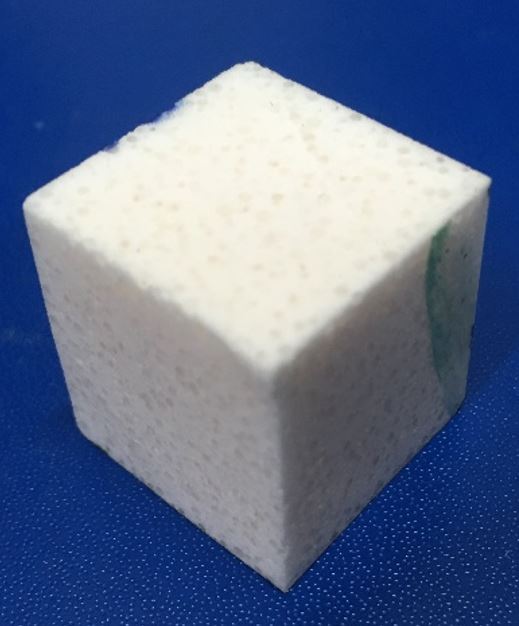 |
Due to the ability to distinguish different types of materials, pores in the internal structure of the sample can also be distinguished. This is useful for determining total porosity, especially in the case of closed pores.
Computed microtomography provides images with comparatively high resolution (µm to tens of µm). This can be used to compare the shape and size changes of different components due to wear, formation of deposits or corrosion products. The visualization shows engine intake valves after production and after years of service when in some places the dimensions of the valve are larger due to the formation of deposits. Similarly, it is possible to compare finished products with a CNC or a 3D printing model.
|
|
Technopark Kralupy is a spin-off of The University of Chemistry and Technology Prague serving the Czech and international industry in the field of building chemistry and similar subjects since 2015.
Department of Metallic Construction Materials
Technopark Kralupy of the University of Chemistry and Technology Prague
Technopark Kralupy VŠCHT Praha
Náměstí G. Karse 7
278 01 Kralupy nad Vltavou
Czech Republic
kovy@technopark-kralupy.cz
Phone: +420 220 446 104, +420 723 242 413
© 2022–2024 Technopark Kralupy
[urlnadstranka] => [ogobrazek] => [pozadi] => [iduzel] => 63615 [canonical_url] => [skupina_www] => Array ( ) [url] => /tomography [sablona] => stdClass Object ( [class] => stranka [html] => [css] => [js] => [autonomni] => 1 ) ) [56176] => stdClass Object ( [nazev] => Durability of paint systems according to EN ISO 12944 [seo_title] => Durability of paint systems according to EN ISO 12944 [seo_desc] => [autor] => [autor_email] => [obsah] =>Summary of all activities of Metallic Construction Materials group is here.
| Thanks to great mechanical properties, processability, availability of iron ore and low cost is steel the most widely used metallic construction material. The amount of steel used worldwide is more than 30 times higher than that of aluminium and its alloys. However, non-alloyed and low-alloyed steel grades are prone to corrosion in water, wet atmosphere and soil. To avoid formation of red corrosion products (rust) on a steel surface, it needs to be protected for majority of applications. Painting is, by far, the most commonly used corrosion protection method. A protective paint system can be composed of a single layer or several layers of organic, or less often inorganic, paint films applied on a well prepared steel surface. Through selection of chemical composition, thickness and number of paint layers, the protective ability of a paint system can be tailored to fit the intended application. There are few micrometres thick single-layer coatings for temporary corrosion protection or for use in very low corrosive environments, as well as robust paint systems composed of several layers with different properties as thick as 1 mm for protection under the most aggressive conditions. |
|
Standards EN ISO 12944-1 to 9 were designed to simplify selection of the right paint system from numerous options available on the market. They introduce a system of classification of atmospheric and water environments and recommend paint systems suitable for particular corrosivity classes. It helps designers, project architects and end users in selection of a paint system with appropriate durability.
Technopark Kralupy offers a complete service for determination of the paint system durability (C3-H, C2-M, C4-VH etc.). In our laboratories, we will:
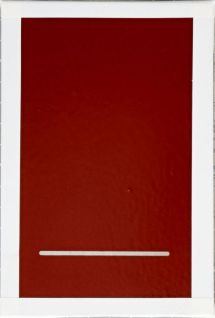 |
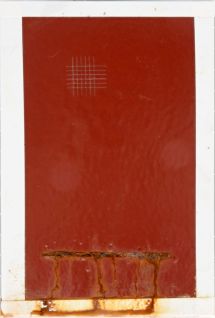 |
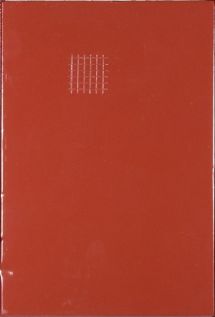 |
| Sample with a scribe | Sample with a scribe after the neutral salt spray test | Sample after a cross-cut test |
If a paint system passes the requirements of EN ISO 12944-6, we will issue a Test protocol certifying the paint system durability in an environment with given corrosivity classification.
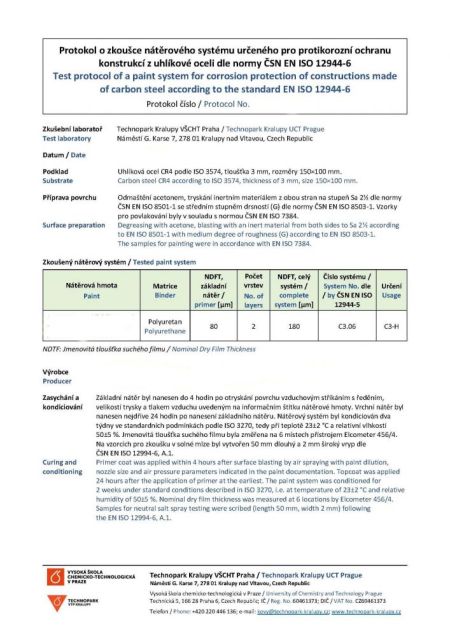 |
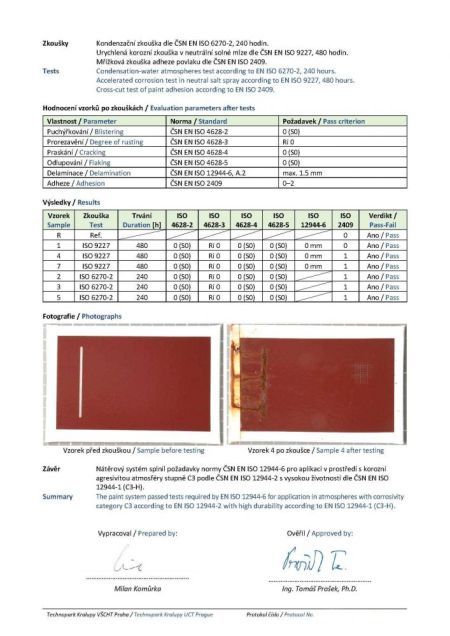 |
| Example of a certificate for a paint system, which passed tests according to EN ISO 12944 | |
We carry out qualification tests of paint systems for the most aggressive conditions of marine climate and sea water according to the requirements of EN ISO 12944-9, i.e. the cyclic weathering test combining UV degradation, water condensation, deposition of salt spray and freezing, the test of resistance against cathodic delamination according to EN ISO 15711, Method A and the immersion test in artificial sea water according to EN ISO 2812-2.
Technopark Kralupy is a spin-off of The University of Chemistry and Technology Prague serving the Czech and international industry in the field of building chemistry and similar subjects since 2015.
Department of Metallic Construction Materials
Technopark Kralupy of the University of Chemistry and Technology Prague
Technopark Kralupy VŠCHT Praha
Náměstí G. Karse 7
278 01 Kralupy nad Vltavou
Czech Republic
kovy@technopark-kralupy.cz
Phone: +420 220 446 104, +420 723 242 413
© 2020–2024 Technopark Kralupy
[urlnadstranka] => [ogobrazek] => [pozadi] => [iduzel] => 56176 [canonical_url] => [skupina_www] => Array ( ) [url] => /paint-systems [sablona] => stdClass Object ( [class] => stranka [html] => [css] => [js] => [autonomni] => 1 ) ) [48831] => stdClass Object ( [nazev] => Weathering tests [seo_title] => weathering-tests [seo_desc] => Weathering tests [autor] => [autor_email] => [obsah] =>Summary of all activities of Metallic Construction Materials group is here.
For corrosion testing, click here.
Water, heat, thermal cycles, sun irradiation and combination of these factors cause changes in properties of natural and synthetic materials such as wood, leather, paper, textile, plastics, organic coatings and adhesives. Weathering tests are used for the assessment of material and product resistance against climatic degradation factors both in exterior and interior. The effect of climatic parameters on colour changes, gloss, strength, elasticity, adhesion and other properties is evaluated. The tests are used widely for example in automotive, textile, packaging and building industry.
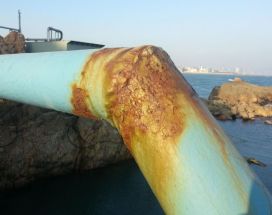 |
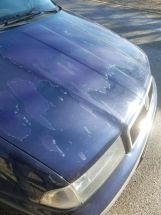 |
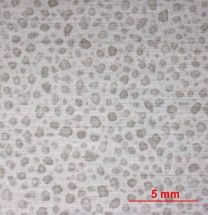 |
Our testing laboratory is equipped with climatic, condensation, UV, sun irradiation and other chambers, which allow us performing most standardized and customer-defined weathering tests.
We run weathering tests for industry and within research and development projects.
|
EN ISO 6270-1 Paints and varnishes - Determination of resistance to humidity - Part 1: Condensation (single-sided exposure) EN ISO 6270-2 Paints and varnishes - Determination of resistance to humidity - Part 2: Procedure for exposing test specimens in condensation-water atmospheres EN ISO 13523-25 Coil coated metals - Test methods - Part 25: Resistance to humidity
EN 13523-26 Coil coaled metals - Test methods - Part 26: Resistance to condensation of water
EN 13523-27 Coil coaled metals - Test methods - Part 27: Resistance to humid poultice (Cataplasm test)
ASTM D2247
ASTM D1735 DEF STAN 00-35, část 3, Method CL7 DIN 50017 (invalid) Water condensation can cause corrosion degradation especially in enclosed locations. The tests are particularly suitable for painted substrates and for adhesives as an indication of tendency to blistering and loss of adhesion. |
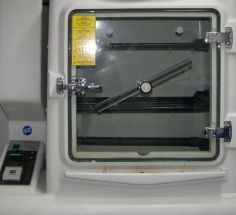 |
The UV component of sun irradiation is an important degradation factor for organic, mostly polymeric, materials. Combination of UV irradiation, humidity and eventually other degradation factors cause susceptible materials to become brittle, chalk, crack, blister, change colour and gloss or otherwise lose their application properties.
Although the UV irradiation at wavelengths from 295 to 400 nm accounts for only 7% of total sunlight energy (visible light forms 55 % and infrared irradiation (IR) 38 % of sun irradiation reaching the Earth surface), it is responsible for almost entire degradation of organic materials. In the Czech Republic, the maximal irradiance reaches from 950 to 1350 W/m², which corresponds to radiant exposure of about 2 MWh/m² a year. The relevant yearly dose of UV irradiation can be applied artificially in a chamber with UV-emitting lamps in about 800 to 1800 hours. The exact exposure time depends on the irradiation intensity. There is a general rule that the correlation between an accelerated test and service experience will be better if the intensity of an artificial UV source is closer to sunlight intensity. Indeed, the lower is the UV intensity the longer is the test.
To break a bond in an organic molecule, energy corresponding to the bond strength has to be provided. Stable bonds such as O-H or C-H needs more energy to be broken than less stable bonds such as C-N, N-H or C-C. In view of UV degradation, stable bonds will be cleft only by high energy, i.e. low wavelength, irradiation. Besides direct cleavage of organic bonds, UV irradiation can initiate reactions with other substances such as oxygen. Interaction between irradiation and organic polymer matter necessitates absorption of an irradiation energy quantum, a photon. Ranges of irradiation wavelengths that can be absorbed in a particular material depend on the chemical composition, presence of pollutants and stabilizers (antioxidants, UV absorbers and extinguishers). Therefore, two products made of an identical polymer, e.g. PVC, may show dramatic differences in weathering resistance.
Following photochemical reaction may lead to polymer bond cleavage, monomer formation, cross-linking and other, usually undesirable reactions, which are macroscopically observable in degradation of functional properties of the product. The rate of degradation is affected also by heat (increase in temperature, dimensional changes and evaporation), presence of oxidants (oxygen, ozone, etc.) and water (chemical reactivity, increase in oxygen transport, erosion, freeze-thaw, thermal shocks).
Since the intensity and spectrum of sunlight depend on the Sun and Earth position (season), elevation, geographical location, daytime and orientation of exposed surfaces, it is practical to use standardized “average” spectra defined in Table 4 of the Publication #85 of the International Commission on Illumination (Commission internationale de l'éclairage, CIE) or in a US standard ASTM G177. They define the spectral irradiance at 340 nm as 0.68 and 0.73 W/m², respectively.
Currently, two types of lamps are used in weathering chambers: xenon arc and UV fluorescent ones. The former one provided a spectrum similar to sunlight including visible and IR components. The latter lamps emit mainly UV irradiation. Comparison of these UV sources is given in the chart.
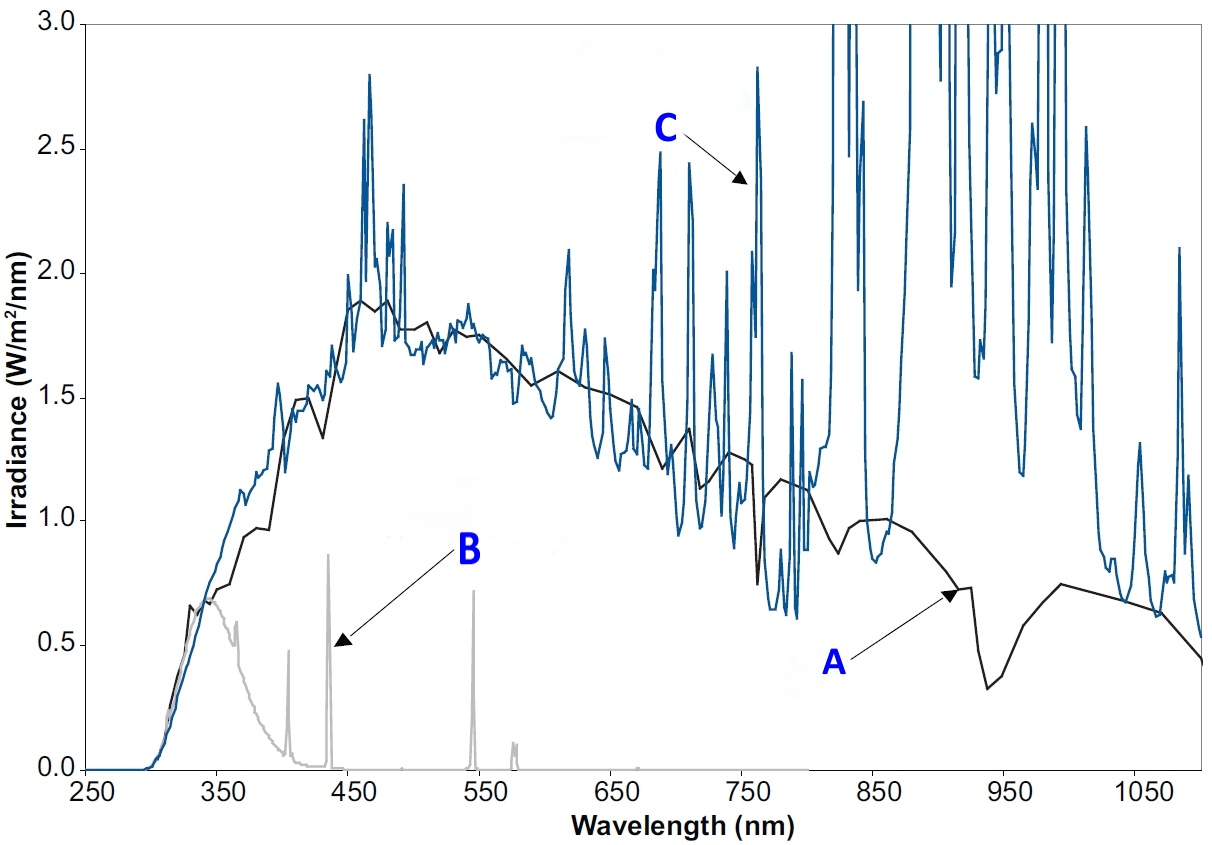 |
Comparison of sun irradiation spectrum (A) and spectra of fluorescent lamp UVA-340 (B) and xenon arc with daylight filter (C); the chart is reproduced from the Technical bulletin LU-0822 „Sunlight, Weathering & Light Stability Testing“ of Q-Lab Corporation
Our testing laboratory is equipped with a Q-Lab Xe3 chamber, which can run complex tests on the effect of sunlight, heat and water on the weathering resistance of organic materials such as textile, geotextile, organic coatings and paints, packaging, plastics, adhesives and sealants and 3D products made of these materials. The spectrum can be adjusted specific optical filters inserted in between lamps and specimens. Daylight, indoor light behind window glass of different types and extended UV spectra can be simulated. Besides irradiation intensity and spectrum, the chamber can control surface temperature of specimens, air temperature and air relative humidity. In addition, it is possible to spray specimens with water or any other water solution, simulating e.g. acid rain. These factors can be combined in standardized and customer-defined programmable cycles.
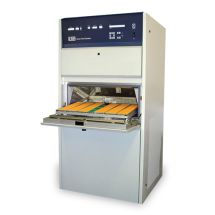 |
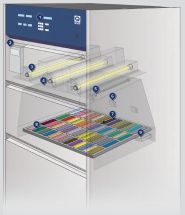 |
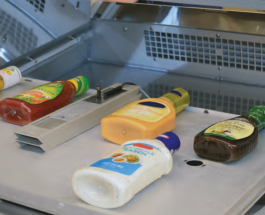 |
Figures are reproduced from materials of Q-Lab Corporation
Our laboratory can carry out tests according to the following standards in the chamber with xenon arc lamps:
|
General standards |
IEC 68-2-9, ISO 4892-1, ISO 16474-1, ASTM G151, ASTM G155, MIL-STD-810G, GB/T 16422.1 |
|
Automotive |
SAE J2412 (Ford, General Motors), SAE J2527 (Ford, General Motors), PV 1303 (Volkswagen), PV 1306 (Volkswagen), PV 3929 (Volkswagen), PV 3930 (Volkswagen), GMW 14162 (General Motors), GME 60292 (GM Opal), PF-1 1365 (Chrysler), VDA 75202 (BMW), ISO 105-B06 (Porsche), DBL 5555 (Daimler), DIN 75202 (Porsche, Daimler), 50451 (Fiat), FLTM EU BO 050-1 (Ford), GMW 14660 (General Motors), GM 9125P (General Motors), ISO 4892-2 (General Motors, Porsche), GMW 14170 (General Motors), DBL 7399 (Daimler), HES D6601 (Honda), JIS D0205 (Japan Autospec), ISO 11341 (International), ISO 4892-2 (International), ASTM D7356 (International), ASTM D7869 (International), ISO 105 B10 (International) |
|
Roofing |
ASTM D1670, ASTM D4434, ASTM D4637, ASTM D4798, ASTM D4811, ASTM D5019, ASTM D6083, ASTM D6878 |
|
Adhesives and sealants |
ASTM C732, ASTM C734, ASTM C793, ASTM C1257, ASTM C1442, ASTM C1519, ASTM C1251, ASTM C1501, ASTM C1184, ASTM D904 |
|
Printing inks and paper |
ISO 11798, ISO 12040, ISO 18909, ASTM D3424, ASTM D4303, ASTM D5010, ASTM D6901, ASTM F2366, GB/T 22771 |
|
Packaging |
ASTM D6551 |
|
Textile |
AATCC TM 16, AATCC TM 169, Adidas TM 5.11, GB/T 8427, GB/T 8430, GB/T 8431, GB/T 16991, IS: 2454, ISO 105-B02, ISO 105-B04, ISO 105-B06, ISO 105-B07, M & S C9, M & S C9A, CPAI-84 |
|
Geotextile |
ASTM D4355 |
|
Photovoltaic |
IEC 61345 |
|
Coatings |
EN ISO 16474-2 Paints and varnishes - Methods of exposure to laboratory light sources - Part 2: Xenon-are lamps ISO 11341, ISO 15110, ASTM D3451, ASTM D3794, ASTM D6577, ASTM D6695, GB/T 1865, MIL-A-8625-F, MIL-P-14105-D, JIS K 5600-7-7, MPI: #113, MS 133: Part F14, IRAM 1109-B14:2008, JDQ-533, #85 FMR |
|
Plastics |
EN ISO 4892-2 Plastics - Methods of exposure to laboratory light sources - Part 2: Xenon-arc lamps ISO 29664, JIS K 7350-2, DIN EN 513, ASTM D1248, ASTM D2565, ASTM D4101, ASTM F1515, EH-438-2, ASTM D4459, ASTM D5071, ASTM D6662, UL 1581, GB/T 16422.2, GB/T 29365 |
|
Rubber |
ASTM D750, ASTM D925, ASTM D1148, ISO 3865, ISO 4665, GB/T 3511 |
|
Pharmaceuticals and cosmetics |
FDA Part III, ICH Guideline |
QUV chambers of Q-Lab are used for testing of roofing, sealants, plastics, textile, organic paints and automotive materials. Specimens are usually flat but there are sample holders able to accommodate 3D specimens as well. Specimens can be intermittently irradiated with UV, exposed to condensing water at different temperatures and sprayed with water. Most used are UVA-340 lamps with intensity maxima at 340 nm wavelength (outdoor conditions), but is it possible to apply UVA-351 (conditions behind window glass), UVB-313EL and FS-40 lamps (extreme conditions, high acceleration) and lamps emitting cool white light (simulation of conditions in office, commercial and retail buildings).
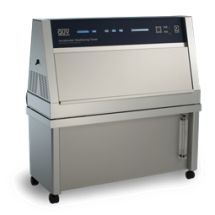 |
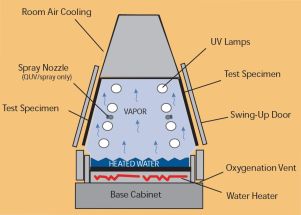 |
Figures are reproduced from materials of Q-Lab Corporation
Our laboratory can carry out tests according to the following standards in the chamber with UV fluorescent lamps:
|
General standards |
ASTM G-151, Standard Practice for Exposing Nonmetallic Materials in Accelerated Test Devices that Use Laboratory Light Sources ASTM G-154, Standard Practice for Operating Fluorescent Light Apparatus for UV Exposure of Non-Metallic Materials BS 2782: Part 5, Method 540B (Methods of Exposure to Lab Light Sources) Colts Standard Test – UV Dye Resistance to Fade - QUV GB/T 14522 – Artificial Weathering Test Method for Plastics, Coatings, and Rubber Materials used for Machinery Industrial Products – Fluorescent UV Lamps GSB AL 631 – International Quality Guidelines for the Coatings of Aluminum Building Components ISO 4892-1 Plastics- Methods of exposure to laboratory light sources-Part 1: General Guidance JIS D 0205, Test Method of Weatherability for Automotive Parts (Japan) SAE J2020, Accelerated Exp. of Automotive Exterior Matls Using a Fluorescent UV/Condensation Apparatus |
|
Plastics |
EN ISO 4892-3 Plastics - Methods of Exposure to Laboratory Light Sources-Part 3: Fluorescent UV Lamps DIN 53 384, Testing of plastics, Artificial Weathering and Exposure to Artificial Light UNE 53.104 (Stability of Plastics Materials Exposed to Simulated Sunlight) JIS K 7350, Plastics - Methods of Exposure to Laboratory Light Sources-Part 3: Fluorescent UV Lamps ASTM D-1248, Standard Specification for Polyethylene Plastics Extrusion Materials for Wire and Cable ASTM D-4329, Standard Practice for Light/Water Exposure of Plastics ASTM D-4674, Test Method for Accelerated Testing for Color Stability of Plastics Exposed to Indoor Fluorescent Lighting and Window-Filtered Daylight ASTM D-5208, Standard Practice for Exposure of Photodegradable Plastics ASTM D-6662, Standard Specification for Plastic Lumber Decking Boards ANSI C57.12.28 Specification for Accelerated Weathering of Padmounted Equipment Enclosure Integrity ANSI, A14.5 Specification for Accelerated Weathering of Portable Reinforced Plastic Ladders Edison Electrical Inst. Specification for Accelerated Weathering of Padmounted Equip. Enclosure Integrity Wisconsin Electric Power Specification for Polyethylene Signs |
|
Adhesives and sealants |
UNE 104-281-88 Accelerated Testing of Paints and Adhesives with Fluorescent UV Lamps ASTM C 1501, Standard Test Method for Color Stability of Building Construction Sealants as Determined by Laboratory Accelerated Weathering Procedures ASTM C-1184, Specification for Structural Silicone Sealants ASTM C-1442, Standard Practice for Conducting Tests on Sealants Using Artificial Weathering Apparatus ASTM D-904, Standard Practice for Exposure of Adhesive Specimens to Artificial Light ASTM D-5215, Standard Test Method for Instrumental Evaluation of Staining of Vinyl Flooring by Adhesives American Plywood Assn., Approval Procedures for Synthetic Patching Materials, Section 6 |
|
Printing inks |
ASTM F1945, Lightfastness of Ink Jet Prints Exposed to Indoor Fluorescent Lighting |
|
Textile |
AATCC Test Method 186, “Weather Resistance: UV Light and Moisture Exposure” ACFFA Test Method for Colorfastness of Vinyl Coated Polyester Fabrics |
|
Coatings |
EN ISO 16474-3 Paints and varnishes - Methods of exposure to laboratory light sources - Part 3: Fluorescent UV lamps UNE 104-281-88 Accelerated Testing of Paints and Adhesives with Fluorescent UV Lamps ASTM D-3794, Std. Guide for Testing Coil Coatings ASTM D-4587, Std. Practice for Light/Water Exposure of Paint GB/T 8013 Anodic Oxide Coatings and Organic Polymer Coatings on Aluminum and its Alloys GB/T 16585 Rubber, Vulcanized Test Method of Resistance to Artificial Weathering – Fluorescent UV Lamps GM 4367M Topcoat Materials - Exterior GM 9125P Laboratory Accelerated Exposure of Automotive Material ISO 11507, Exposure of Coatings to Artificial Weathering-Exposure to Fluorescent UV and water ISO 20340, Performance Requirements for Protective Paint Systems for Offshore and Related Structures JIS K 5600-7-8, Testing Methods for Paints M5982-1990, Test Method for Accelerated Weathering MS 133: Part F16: Exposure of Ctgs to Artificial Weathering- Exposure to Fluorescent UV and Water (ISO 11507) NACE Standard TM-01-84 Procedures for Screening Atmospheric Surfaced coatings NBR -15.380 Paints for buildings–Methods for performance evaluation of paints for non-industrial buildings – Resistance to UV irradiation/water vapor condensation, by accelerated test NISSAN M0007, Fluorescent UV/Condensation Test prEN 927-6– Pt. 6: Exposure of Wood Coatings to Artificial Weathering Using Fluorescent UV and Water UNE 104-281-88 Accelerated Testing of Paints and Adhesives with Fluorescent UV Lamps FED-STD-141B |
|
Roofing |
EN ISO 13523-10 Coil coaled metals - Test methods - Part 10: Resistance to fluorescent UV radiation and water condensation BS 903: Part A54 Annex A & D, Methods of Testing Vulcanized Rubber CGSB-37.54-M, Canadian General Standards Board Spec. for PVC Roofing & Waterproofing Membrane DIN EN 534, Corrugated Bitumen Sheets EOTA TR 010, Exposure procedure for artificial weathering RMA Specification for Reinforced Non-Vulcanized Chlorosulfonated Polyethylene Sheet for Roofing Membrane ASTM D-4799, Test Method for Accelerated Weathering of Bituminous Roofing Materials ASTM D-4811, Std. Specification for Non-vulcanized Rubber Sheet Used as Roof Flashing ASTM D-3105, List of Test Methods for Elastomeric and Plastomeric Roofing & Waterproofing ASTM D-4434, Std. Specification for PVC Sheet Roofing ASTM D-5019, Std. Specification for Reinforced Non-Vulcanized Polymeric Sheet Used in Roofing Membrane ANSI/RMA IPR-1-1990 Req. for Non-Reinforced Black EPDM Sheet for Roofing Membrane ANSI/RMA IPR-2-1990 Req. for Fabric-Reinforced Black EPDM Sheet for Roofing Membrane ANSI/RMA IPR-5-1990 Req. for Non-Reinforced Non-Black EPDM Sheet for Roofing Membrane ANSI/RMA IPR-6-1990 Req. for Fabric-Reinforced Non-Black EPDM Sheet for Roofing Membrane EN 1297, Flexible sheets for waterproofing—Bitumen, plastic and rubber sheets for roof waterproofing — Method of artificial ageing by long term exposure to the combination of UV radiation, elevated temperature and water |
For corrosion tests, click here.
We can help with selection of the optimal procedure in view of the required product lifetime and service conditions.
We provide complete service including sample preparation and intermediate and final evaluation of the material stability. Our analytical, electrochemical, metallographic and further equipment allows for detail characterization of eventual degradation.
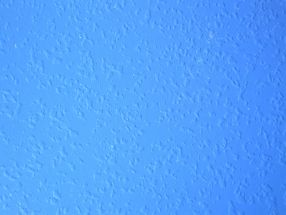 |
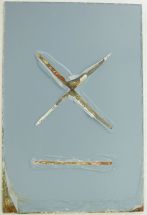 |
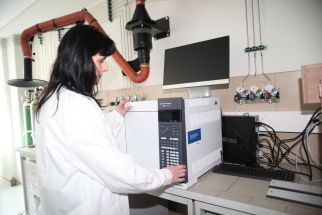 |
Service data are often required for confirmation of laboratory results. We oversee field exposures at well-managed natural weathering sites in the Czech Republic and other European countries, USA, China and elsewhere.
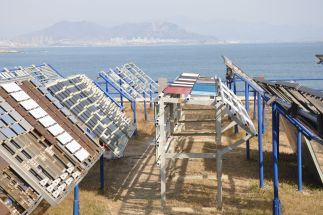 |
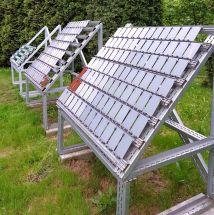 |
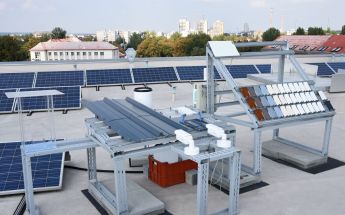 |
Technopark Kralupy is a spin-off of The University of Chemistry and Technology Prague serving the Czech and international industry in the field of building chemistry and similar subjects since 2015.
Department of Metallic Construction Materials
Technopark Kralupy of the University of Chemistry and Technology Prague
Technopark Kralupy VŠCHT Praha
Náměstí G. Karse 7
278 01 Kralupy nad Vltavou
Czech Republic
kovy@technopark-kralupy.cz
Phone: +420 220 446 104, +420 723 242 413
© 2017–2024 Technopark Kralupy
[urlnadstranka] => [ogobrazek] => [pozadi] => [iduzel] => 48831 [canonical_url] => [skupina_www] => Array ( ) [url] => /weathering-tests [sablona] => stdClass Object ( [class] => stranka [html] => [css] => [js] => [autonomni] => 1 ) ) [38862] => stdClass Object ( [nazev] => Project BioMates [seo_title] => BioMates [seo_desc] => BioMates [autor] => [autor_email] => [obsah] =>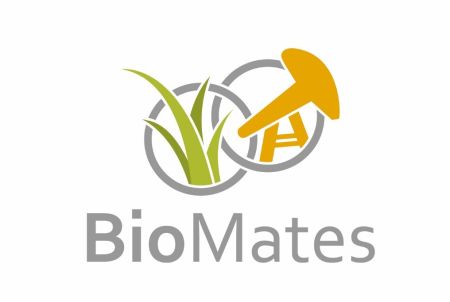
Technopark in European projects
Technopark Kralupy together with the Institute of Petroleum Technology and Alternative Fuels ICT Prague involved in solving BioMates new project, which is funded by the Framework Program for Research and Innovation Horizon EU by 2020.
BioMates project is focused on the treatment of non-food biomass into chemical intermediates, which could be used in conventional processes of oil. The development of a process which would enable effective and decentralized processing residues from the non-food crop production and biomass, such as straw and perennial grass (Miscanthus x giganteus) is a key activity of the project. The aim of the project is to get out of the processing of biomass such bio-components, which are compatible with the current resource base for the production of motor fuels. These components would be then manufactured in existing refineries conformed for processing of fossil fuels. The resulting hybrid fuel should, despite the high content of bio-components could be used in conventional combustion systems.
The main task of ICT together with another Czech subscriber by RANIDO, Ltd., development and testing of a suitable catalyst system for the above described use. Besides ICT and RANIDO them into the project involved the Fraunhofer Institute for Environmental, Safety, and Energy Technology UMSICHT, Germany (project coordinator), Center for Research & Technology Hellas / ČeRth - Chemical Process & Energy Resources Institute / CPER, Greece, Imperial College London , United Kingdom, ifeu - Institut für Energie- und Umweltforschung Heidelberg GmbH, Germany, Hydrogen Efficiency Technologies (HyET) BV, the Netherlands and BP Europa SE, Germany.
Name of Project: Reliable Bio-based Refinery Intermediates
Website: www. biomates.eu
Period of solution: 1. 10. 2016 – 30. 9. 2020
Principal investigator for UCT Praha: Ing. David Kubička, Ph.D. MBA.


This project has received funding from the European Union’s Horizon 2020 research and innovation programme under the grant agreement No 727463.
This press release reflects only the authors’ view; the European Commission and its responsible executive agency INEA are not responsible for any use that may be made of the information it contains.
[iduzel] => 38862 [canonical_url] => [skupina_www] => Array ( ) [url] => /biomates-en [sablona] => stdClass Object ( [class] => stranka [html] => [css] => [js] => [autonomni] => 1 ) ) [41780] => stdClass Object ( [nazev] => EU projects [seo_title] => EU projects [seo_desc] => [autor] => [autor_email] => [obsah] => 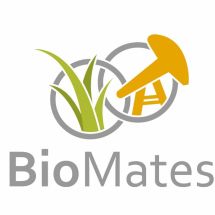 |
The Technopark Kralupy, together with the Institute of Oil and Alternative Fuels of UCT Prague, has been involved in the solution of the new BioMates project, which is funded by the EU Horizon 2020 Framework Program for Research and Innovation. |
|
Development and retrofitting of Technopark Kralupy of the University of Chemistry and Technology Prague
Instrumentation retrofitting of research workplaces |
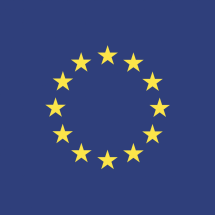 |
 |
Use of heat-resistant materials for advanced applications in vehicles
Research and use of composite materials with high thermal resistance in the transport industry |
Creating a system for effective collaboration with the application sphere
Building internal and external infrastructure for effective collaboration with the application sphere |
|
Invitation |
Title |
State |
| MPO OP PIK | Development of a low H2O2 gas phase detector | Realization |
| MPO OP PIK | Photo papers - Vavex | Realization |
| MPO OP PIK | Foam ceramic photocatalytic panels - Lanik | Realization |
| MPO OP PIK | A new type of butter maker - B e H o | Realization |
Invitation |
Title |
State |
| MPO OP PIK | Innovative voucher - Photocatalysis | Done |
| MPO TRIO | Innovation of material requirements for products with high heat resistance | Realization |
| GA ČR | Hydrogenation catalysts | Realization |
| GA ČR | Effect of microstructure on hydrogen induced corrosion damage of high strength steels | Realization |
| MPO OP PIK | Innovative voucher - Water glass | Realization |
| MPO OP PIK | Innovative voucher - EKAZ | Realization |
| MPO TRIO II | Development of special polymeric material | Realization |
 |
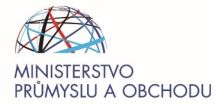 |
Project title: Development and retrofitting of Technopark Kralupy of UCT Prague
Reg. No .: CZ.01.1.02 / 0.0 / 0.0 / 15_035 / 0007164
The main source of funding for the Technopark development and retrofitting project was the European Regional Development Fund, from which funds were provided through the Operational Program Enterprise and Innovation for Competitiveness, Infrastructure Services - Call I. in the total amount of CZK 17,071,500
The aim of the project is to upgrade Technopark's facility for equipment and technology that will contribute to:
- Extending specialized specialist services offered to cooperating businesses
- increase the attractiveness of TPKs for regional businesses and strengthen the competitiveness of the region
- extension of professional background and possibility of practical application for graduates of technical branches
- Enhancement of the possibilities for involving ICTs in grant projects especially for SMEs,
- increasing the professional scope of the workplace especially in the field of special technical tests and analyzes
- extending the range of cooperation with existing and new industrial partners, offering some equipment not requiring trained operators, increasing flexibility
- shortening the time of solving individual problems, speeding up the process of realizing new ideas
- an increase in the number of professionals working in the industrial sphere and involved in technology transfer
- Implementation of the measures resulting from the NRIS3 strategy and significant support for the implementation of the Regional Innovation Strategy of the Central Bohemia Region

Silicate materials find applications in many industries. They are used for example in the construction industry (concrete, cement, lime), the ceramics and glass industries (from classic cups and glasses to special applications such as catalyst supports or special filters), in paint industries (binders and fillers), fireproof and refractory applications (the lining of domestic fireplaces to large foundry and glass furnaces) or in the restoration of artworks.Our group is focused on a number of projects in the field of silicates. We offer to our customers except the classic tests of materials also consulting and an expert services.
Research group of building materials based on silicates carries out sample testing of construction materials to withstand high temperatures, pressures and aggressive environment.
For testing of building materials we have a top-class laboratory equipment and qualified professionals in the properties of silicate building materials.
|
Tests at elevated and high temperatures |
Mechanical tests |
||
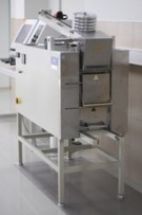 |
Combined furnace
Standards: ČSN EN – 993-6, ČSN EN – 993-7 Use: Determination of flexural strength, E-modulus determination by static method in bending and creep bending at temperatures of 25-1550 ° C. Max sample size: 25x25x160mm |
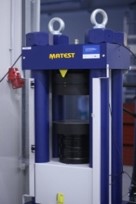 |
Equipment for determining the bending strength and pressure MATEST C089 SERIE
Standards: ČSN EN 1015-11, ČSN EN 772-6, ČSN EN 1170-4, ČSN EN 993-6, ČSN EN 843-1, ČSN EN 658-3 Use: Determination of compressive? strength (0-3000kN) and bending (0-15kN). Determination of Young's modulus by the static method (pressure). Max sample size: pressure: cube sizes up to 200 mm cylinder size up to d = 160mm, h = 320 mm |
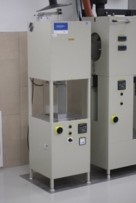 |
Furnace for determination of corrosion resistance refractory material by a melts
Standards: ČSN P CEN/TS 15418 Use: Determination of the corrosion resistance of refractories by a melt at temperatures of 25- 1650 ° C. |
 |
Equipment for determining the bending strength and pressure MATEST E183N
Standards: ČSN EN 1015-11, ČSN EN 12808-3, ČSN EN 993-6 Use: Determination of compressive strength (0-250 kN) Max sample size: Pressure: S1 = 10-100 mm, W2 = 10 to 100 mm, |
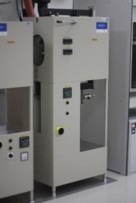 |
Furnace for determination of load capacity in heat and creep in pressure Standards: ČSN EN 993-8 Use: Determination of strength in the heat and creep under pressure Max sample size: d1 = 50mm, d2 = 12mm, h = 50mm |
|
Device name |
Details |
|
Combined furnace for determining - bending strength at high temperature, - E - module static method at high temperature, - creep bending at high temperatures |
Max. temperature 1550°C Max sample size 150x25x25mm, load up to 2500N, deflection accuracy 4µm/1mm ČSN EN – 993-6, ČSN EN – 993-7 |
|
Furnace for determination of corrosion resistance refractory material by a melts |
Max. temperature 1700°C, operating temperature 1650°C, 0-20 rpm, ČSN P CEN/TS 15418 |
|
Furnace for determination of load capacity in heat and creep in pressure |
Max. temperature 1650°C, accuracy 4µm/1mm, load up to 0,2MPa (3 ranges) ČSN EN 993-8 |
|
Vicat automatic recording device |
Determining the setting time of putty, EN-UNI 196-3, DIN 1168 SADRA, ASTM C 191 |
|
Le-Chatelier water bath |
EN196-3 |
|
Moisture analyzer |
|
|
Laboratory oven VENTICELL |
Tempering of materials with hot air forced by the fan. Designed for temperatures up to 250 ° C. |
|
Drying MEMMERT UF75 with forced air |
Max. temparature 300°C, interior width [mm] 400, interior high [mm] 560 |
|
Automatic laboratory mixer of mortal mixtures |
EN 196-1 |
|
Electro-hydraulic testing machine with a drive unit |
Determination of compressive strength (0-3000kN), flexural strength, modulus of elasticity ČSN EN 1015-11, ČSN EN 772-6, ČSN EN 1170-4, ČSN EN 993-6, ČSN EN 843-1, ČSN EN 658-3 |
|
Electro-hydraulic testing machine with microprocessor unit cyber-plus evolution |
Determination of compressive strength (0-250 kN) and the bending (0-15kN), measuring the modulus of elasticity ČSN EN 1015-11, ČSN EN 993-6 |
|
Laboratory mixer of concrete mixtures LMB - C1 CYCLOS |
Preparation of concrete mixtures and mortars in a volume to 70 liters. The speed of the blades 48 rpm |
|
Vibration high frequency table VSB-70 REM |
Zhutňování betonových směsí běžného i vozovkového betonu Compacting concrete mixtures of ordinary and roadway concrete. Speed 2 000-10 000 rpm. |
|
Autoclave |
V = 8l, Tmax = 300°C, pmax = 40bar |
|
Large capacity cabinet for wet storing |
Storing large quantities of cement and mortar samples at saturated humidity and regulated temperature. |
|
Diamond saw |
There is even a blade for cutting metal samples |
|
Equipment for measuring fluidity test |
ČSN EN ISO 4534 |
|
Furnace |
Max. temperature 1200°C, diameterr x high = 170x230 mm |
|
Climatic chamber |
Temperature = -25 to +70°C |
|
Water bath (Matest C304-02) |
Capacity = 200l, EN 196-8 EN ISO 679 ASTM C511 ASTM C109 EN 196-1 |
|
|
Assessment of the properties of materials under extreme conditions allows better understand the properties of materials, to determine their real life and in non-standard situations and avoid accidents buildings in crisis situations - fires or earthquakes.
Contact:
Department of silicate building materials
Technopark Kralupy of The University of Chemistry and Technology, Prague
Dr. Ing. Petr Antoš, Ph.D.
antosp@vscht.cz
Tel. +420 22044 6110, +420 22044 6130
Ing. Jan Urbánek
urbanekj@vscht.cz
Tel. +420 22044 6121, +420 22044 4149

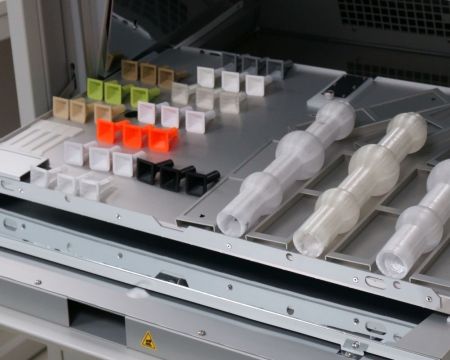
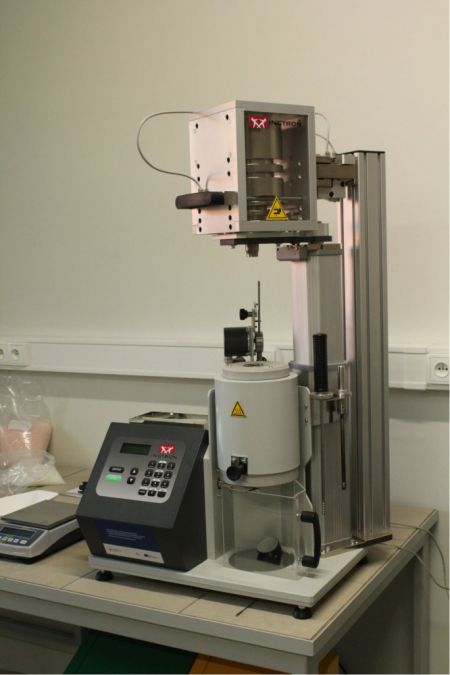
Summary of all activities of Metallic Construction Materials group is here .
For weathering and climatic tests (degradation by UV and other climatic factors), click here.
Accelerated corrosion and weathering tests are useful tools for material selection, initial and residual life time prediction of bare and painted metallic, polymeric, adhesive and other materials in atmospheric exposure conditions and quality control. It is widely used in the automotive, aerospace, building, off-shore, military and infrastructure applications.
Beside generally known Neutral Salt Spray (NSS), Acetic Acid Salt Spray (ASS) and Copper-Accelerated Acetic Acid Salt Spray (CASS) tests, a number of modern cyclic corrosion tests including wet and dry phases has been developed. Because of more realistic conditions, their results correlate better to those from natural exposures and thus provide significantly improved predictive ability. The traditional NSS and its variants are more suitable for quality control.
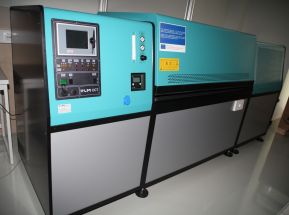 |
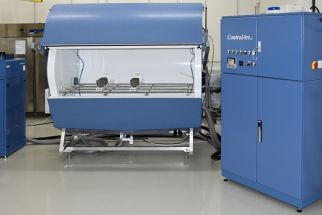 |
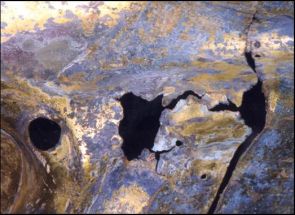 |
In our advanced automated corrosion chambers with a volume of 2000 and 1000 liters with temperature control from –40 to 80 °C and control of the relative humidity (RH) from about 20 to 100 %, we are able to perform tests according to most international, national and industrial standards for commercial applications and research purposes.
| This test has been created jointly by a group within the German Association of the Automotive Industry, VDA, with the aim to serve for the development of new materials and coatings. It allows for the assessment of the corrosion behaviour of components and of the corrosion protection provided by coating systems for applications in the automotive industry. The accelerated test covers in particular the delamination around a defined artificial defect in a coating as well as surface and cut edge corrosion on special test panels, bonding specimens or components. This laboratory-scale cyclic corrosion test is also suitable for assessing perforation corrosion in flanged areas or gaps (hem flanges) and of unpainted surfaces. This method induces corrosion processes and generates reproducible corrosion patterns which correlate well with the results obtained in natural weathering tests and driving operation. In particular, the corrosion patterns for steel, galvanised steel and aluminium closely reflect real-life phenomena. The test method is based on real corrosive climate conditions and delivers differentiated results for a large number of uses in automotive applications. |
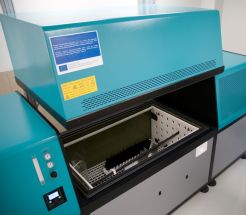 |
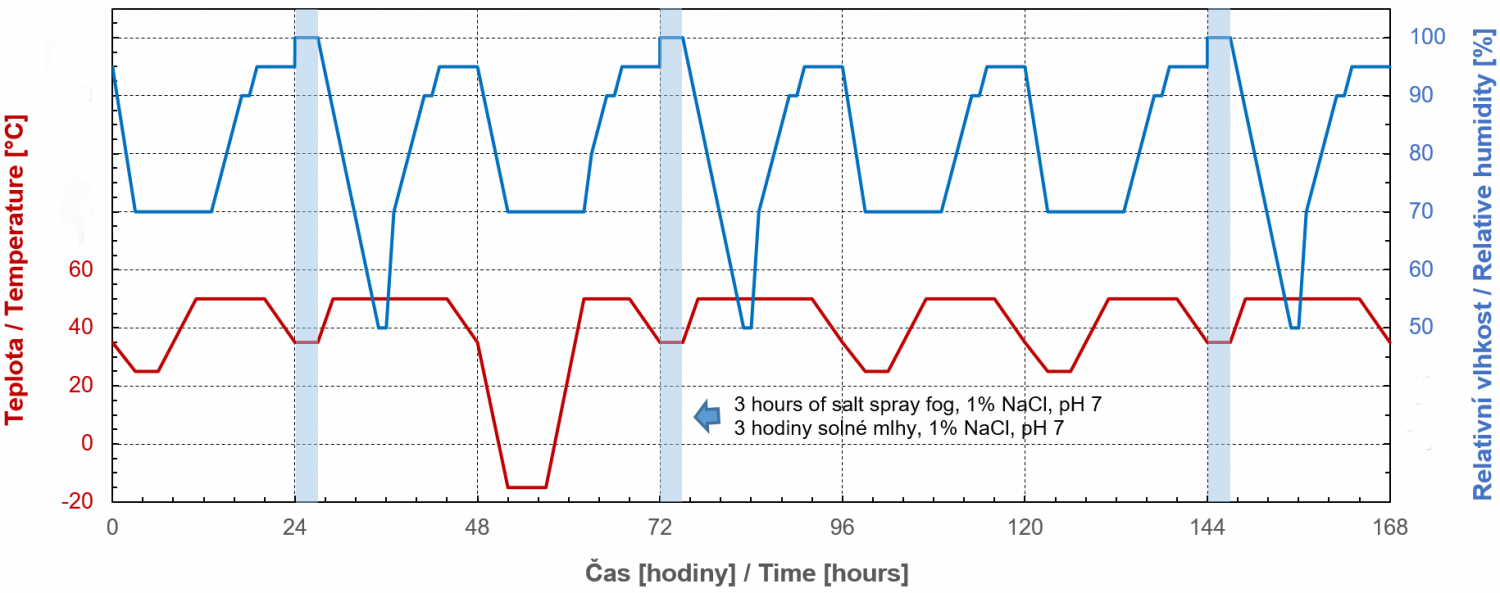
Conditions: Complex test including a variety of technical phases such as a salt spray phase (1 wt.% NaCl solution, pH neutral), wet and dry cycles at temperatures up to 50 °C and a freezing phase at –15 °C. Typical duration: 6 weeks. A week cycle is shown in the chart.
|
This method is designed for corrosion testing of automotive materials conducted on completely painted bodies, body panels, assemblies and add-on parts with differing corrosion protection coatings. It serves to monitor and evaluate corrosion behaviour or corrosion protection measures when exposed to static load. Conditions: 5-day cycle comprising of NSS (35 °C, 5 wt.% NaCl solution), dry phase and humid phase at 40 °C and 100% RH followed by 2-day rest at laboratory temperature. Typical duration: 3, 6, 12 or 18 weeks. A week cycle is shown in the chart. |
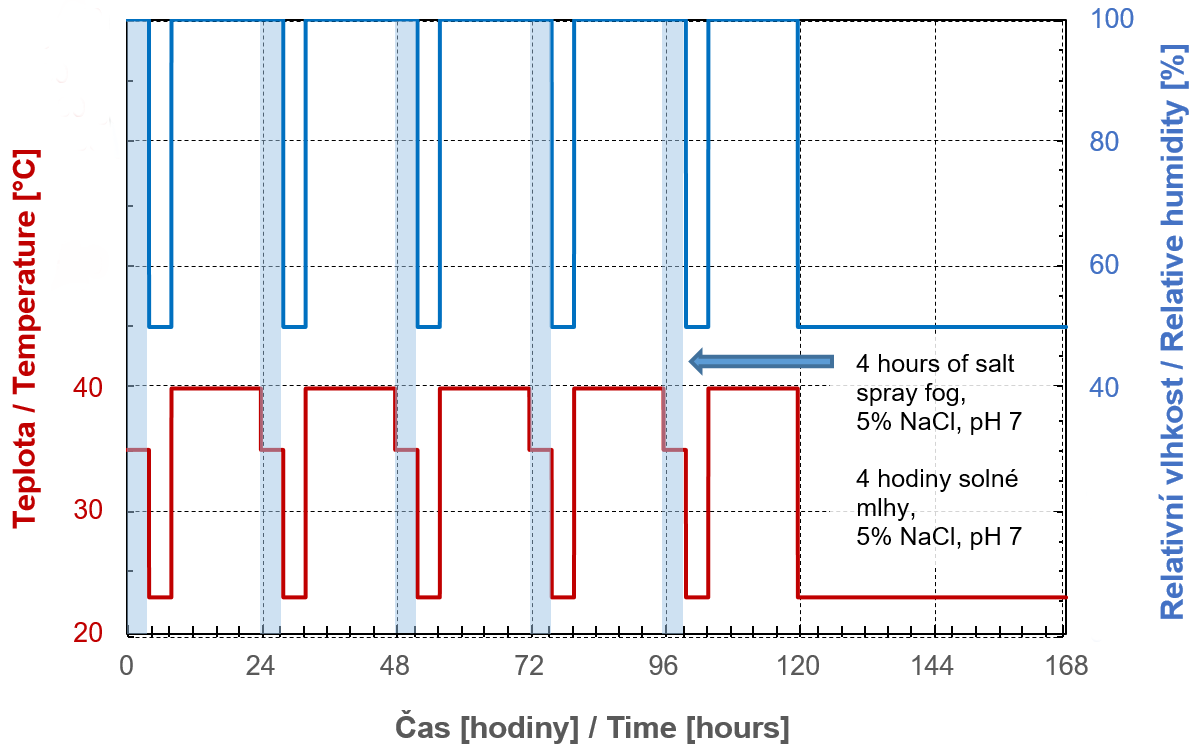 |
Conditions: Combination of the PV 1210 with cycles of rapid variations of temperature and RH from –40 to 80 °C and from 30 to 80 % RH. The chloride solution used for salt spraying is modified and contains 4 wt.% NaCl and 1wt.% CaCl2.
The high/low temperature cycle is designed for testing vehicle parts in the engine compartment in view of e.g. susceptibility to cracks, deformation, separation of the composite material, etc. It can be informative in view of paint stability as well.
| This test procedure is designed for assessment of corrosion resistance in environments with a significant effect of chloride ions, in particular in marine climates and in regions where de-icing salts are applied in winter for road treatment. It is used for metals and their alloys and metallic, conversion and organic coatings. In contrary to most other procedures, salt solution is applied in a form of rain with the deposition intensity of 15 mm/hour. Six weeks of the test simulate about 2 years of service in an area where de-icing salts are used during winter. Conditions: Two times a week, samples are shortly contaminated with 1 wt.% sodium chloride solution acidified with sulphuric acid to pH 4.2. Wetting (35 °C and 95 % RH) and drying (45 °C and 50 % RH) cycles are altered for the rest of the time. A week cycle is shown in the chart. |
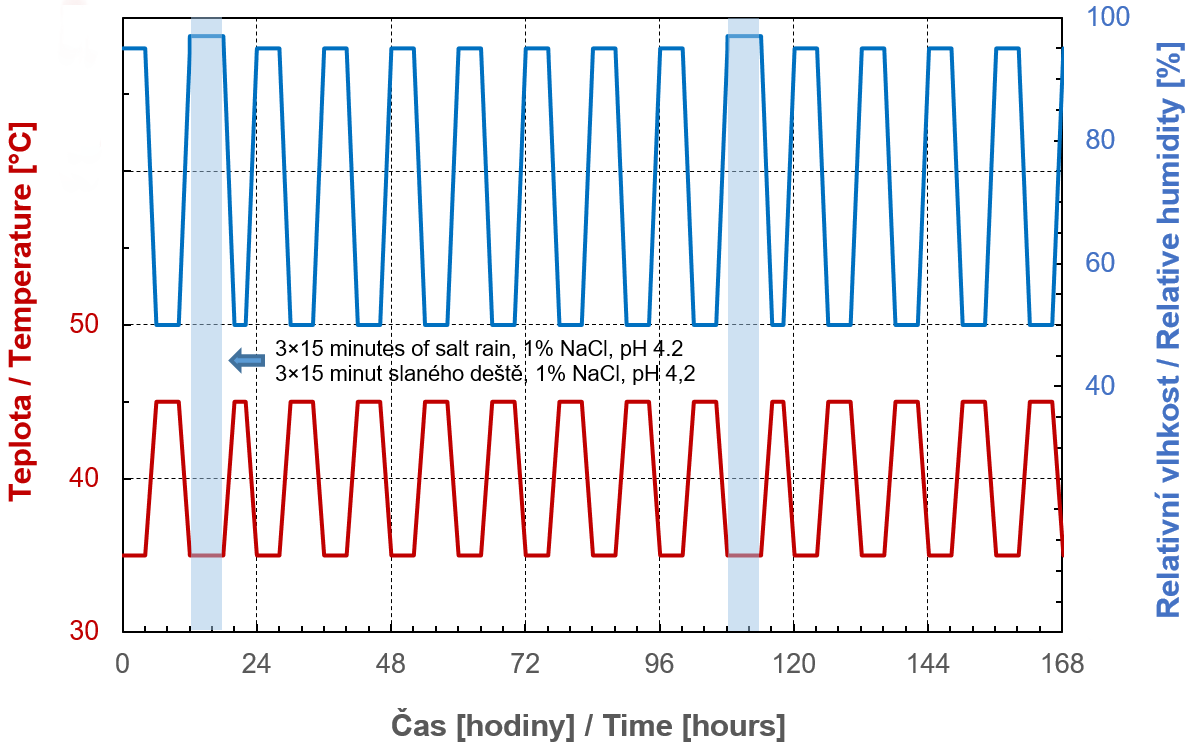 |
Salt solution is applied five times a week in a form of rain by an automatic device or, if it is not available, manually. Six weeks of the test corresponds to 2-4 years of car service in areas where de-icing salts are used. This method differs from VCS 1027,149 (ACT I) in folowing aspects: (1) The corrosion rate for steel is approximately 50 % higher with respect to paint undercutting in confined mode (crevices, etc), but only 10 % higher for general corrosion in open mode; (2) The corrosion rate for zinc is in the order of 30 % lower for open corrosion, but 10-30 % higher for under-paint corrosion of galvanized steel; (3) The test method in this standard is applicable to painted aluminium, contrary to ACT I; (4) This method is better suited to corrosion testing of magnesium (due to longer time of macro wetness), especially when under bimetallic influence; (5) This test is less efficient regarding pitting of aluminium and staining of anodized aluminium, due to the lower frequency of humid to semi-dry cycles; (6) Austenitic stainless steels may exhibit exaggerated red rust due to the comparatively high exposure temperature combined with cyclic drying (above critical pitting temperature).
Conditions: Five 24-hour workday cycles comprise each of 6-hour wet phase at 25 °C with intermittent exposure to 0.5 wt.% sodium chloride solution, 2.5-hour transition drying period and 15.5-hour phase with constant temperature and humidity of 50 °C and 70 % RH. The same conditions are maintained during weekends.
Conditions: Repetition of 8-hour cycles with 4 hours of NSS (35 °C, 5 wt.% NaCl solution), 2 hours of drying at 60 °C and RH < 30 % and 2 hours of moistening at 50 °C and 95 % RH. Typical duration: 500 to 1500 hours.
Conditions: Repetition of 24-hour cycles with 4 hours of NSS (35 °C, 5 wt.% NaCl solution), 2 hours of drying at 60 °C and RH < 30 % and 2 hours of moistening at 50 °C and 95 % RH followed by 5 wet/dry cycles at constant temperature of 60 °C
Renault ECC1 D17 2028
Conditions: Test performed at constant temperature of 35 °C and comprising wet (90 % RH) and dry (55 % RH) phases. Sodium chloride solution with 1 wt. % NaCl at pH 4 is sprayed over samples during 30 minutes once a day followed by a drying phase at 20% RH. Typical duration: 6 weeks.
|
The test procedure reproduces corrosion conditions on car bodies. |
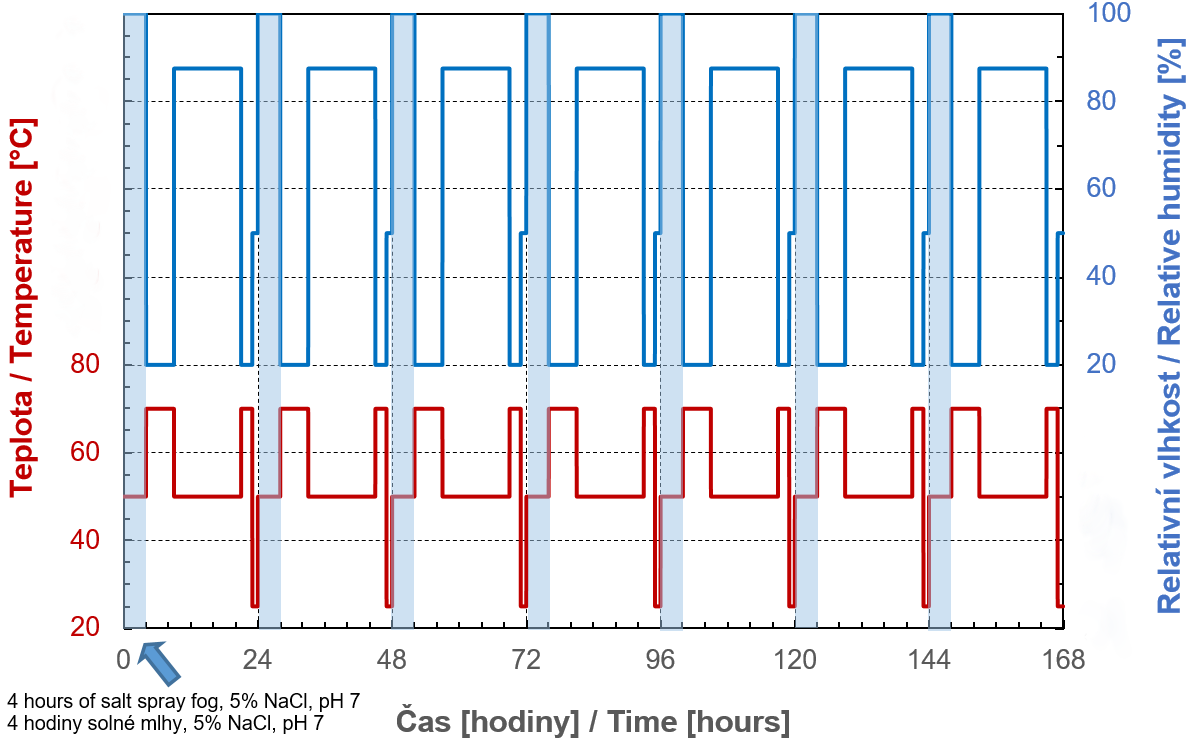 |
Conditions: Salt spray with 1 wt.% NaCl solution at pH 4.1 and wet and dry cycling at a constant temperature of 35 °C.
Conditions: A day of salt spray at 35 °C, 4 days of intermittent condensation at 40 °C and repose in laboratory air and 2 days of repose.
Conditions: A cycle comprises of 3 hours of salt spray at 35 °C, 1 hour of drying at 60 °C, 12 hours of wet conditions at 95 % RH and 40° C, 1 hour of freezing at –10 °C and 6 hours of repose at 25 °C and at 60 % RH.
Procedure used throughout the North American (GM group) and Japanese (Suzuki, Mitsubishi) automotive industry. Since it is a field-correlated test, it can be used as a validation tool as well as a development tool. If corrosion mechanisms other than cosmetic or general corrosion are to be examined using this test, field correlation must be established.
Conditions: Test specimens are exposed to a changing climate that comprises of three repeating sub-cycles of 24 hours in total: 6 hours exposure to a water fog/condensing humidity at 50 °C; 15 minutes immersion in or a direct spray of salt water at ambient conditions; and air drying at 50 % RH and 60 °C. The contamination solution contains NaCl, CaCl2 and NaHCO3.
A procedure designed for bare, metallic coated and painted steel panels for use in the automotive industry.
Conditions: Repetition of cycles of salt spray with neutral 5 wt.% NaCl solution at 35 °C (2 hours), drying phase at 60 °C and at 20–30 % RH (4 hours) and wetting condensing phase at 50 °C and at 95 % RH (2 hours). Typical duration: 30–180 cycles (240–1440 hours).
The predecessor of VDA 233-102. Due to high chloride load, the test provides rather unrealistic results for non-protected metals comparable to those in NSS. It is used for testing of therally cured paint systems for automotive applications.
Conditions: 1 day of NSS (35 °C, 5 wt.% NaCl solution), 4 days of wet (40 °C / condensation) and dry (23 °C / 50 % RH) cycling, 2 days at laboratory temperature and RH. Typical duration: 5 weeks (ISO) or 10 weeks (VDA).
Conditions: Humidity cycling between 95 and 50 % RH at 35 °C with 6-hour salt spray sub-cycle carried out twice a week. The sub-cycle consists of 3 cycles of 15-minute spraying with a 1 wt.% NaCl solution acidified to pH 4.2 followed by a 105-minute period of wet stand-by.
The low pH level of the spraying solution simulates acidic precipitation present in industrialized areas.
Cyclic corrosion and UV exposure of paints on metal using alternating periods of exposure in two different cabinets: a cycling salt spray/dry cabinet and a fluorescent UV/condensation cabinet.
Conditions: The fluorescent UV/condensation cycle is 4-hour UV at 0.89 W m–2 nm–1 at 340 nm and at 60 °C and 4-hour condensation at 50 °C. The salt spray/dry chamber runs a cycle of 1-hour salt spray at ambient temperature and 1-hour dry-off at 35 °C. The salt spray electrolyte contains 0.05 wt.% sodium chloride and 0.35 wt.% ammonium sulphate.
Modifications of NSS with humidity cycling and altered spraying solution.
Conditions: Six-hour repetitive cycles of 45 minutes of spraying with acidified 5 wt.% NaCl solution, 120 minutes of drying and 195 minutes of exposure to high RH.
Modifications of NSS with humidity cycling and altered spraying solution. This test is particularly useful for production control of exfoliation-resistant heat treatments for the 2000, 5000, and 7000-series aluminium alloys. It is also applicable to developmental studies of varying heat treatment parameters to determine effect on corrosion behaviour. For this purpose, a temperature of 49 °C is recommended for the exposure zone. For testing organic coatings on various metallic substrates, an exposure zone temperature of 24 to 35°C may be used since temperatures in excess of 35°C frequently result in paint blistering.
Conditions: Two-hour repetitive cycles of 30 minutes of spraying with acidified artificial sea water and 90 minutes of exposure to elevated RH.
Prohesion is a shortened form of “protection is adhesion”. It was designed for paints on steel and believed to be somewhat more representative of outdoor corrosion than NSS. Prohesion testing has been found especially useful for industrial maintenance coatings.
Conditions: Short cycles of 1-hour spraying with a diluted solution of sodium chloride (0.05 wt.%) and ammonium sulphate (0.35 wt.%) at pH 5–5.4 and 1-hour dry-off.
A test developed for water based and latex paint systems.
Conditions: Repetition of phases of salt spray deposition made of sodium chloride (0.31 g/L) and ammonium sulphate (4.10 g/L), drying at 40 °C, wetting at 40 °C and 75 % RH, drying at 30 °C and condensation at 30 °C. A cycle takes 48 hours and the whole test includes 21 cycles (1008 hours).
A test for paint systems.
Conditions: 30 minutes NSS (35 °C, solution of 5 wt. % NaCl), 90 minutes high humidity (30 °C / 95 % RH), 120 minutes hot dry (50 °C), 120 minutes warm dry (30 °C). This 6-hour cycle is repeated 28 times. The whole test takes 168 hours.
This standard deals with performance of heavy-duty paint systems designed for protection of off-shore and similar structures.
Conditions: Each week cycle includes 3-day exposure to intermittent UV irradiation (4 hours, 60 °C) and water condensation (4 hours, 50 °C) according to EN ISO 16474-3, 3-day exposure to NSS according to EN 9227 and 1-day exposure at –20 °C. Typical duration: 10, 16 or 25 weeks.
A collection of cyclic corrosion test methods for environmental testing of electronic equipment and products to assess their ability to perform under environmental conditions.
Conditions: The test methods include a 2-hour salt mist (salt spray) phase using 5% NaCl (Test method 1–7) or acidified salt solution (Test method 8) at 35 °C, a humid phase at 40 °C and at 93 % RH (Test method 1–6) or at 50 °C and at 95 % RH (Test method 7, 8), and some of them also a dry phase at 23 °C and at 50 % RH (Test method 3–6) or at 60 °C and at RH > 30 % (Test method 7, 8).
Other standard or custom-defined tests can be performed upon demand.
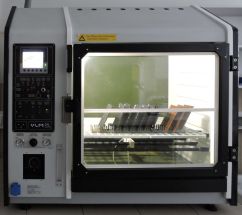
· EN ISO 9227
· EN ISO 13523-8
· ASTM B 117
· IEC 60068-2-11
· JIS Z 2371
· MIL-STD-810G, Test Method 509.6
· MIL-DTL-5541F
· DEF STAN 00-35, Part 3, Test CN2
· ASTM G 85, Practice A1 (AAS)
· DIN 50021 (invalid)
· EN ISO 7253 (invalid)
· BS 7479 (invalid)
· NF X41-002 (invalid)
NSS (5 wt.% solution of NaCl at pH 6.5–7.2 sprayed continuously over sample surface) is the oldest and still most widely used accelerated test recommended for corrosion assessment of metals and alloys, metallic coatings, conversion layers and organic coatings on metal substrates. ASS (5 wt.% NaCl acidified by acetic acid to pH 3.1–3.3) and CASS (further addition of cupper (II) chloride) are used for decorative coatings of copper, nickel and chrome or nickel and chrome and coated aluminium.
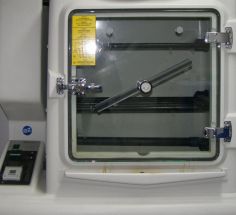
· EN ISO 22479
· EN ISO 13523-23
· ASTM G87
· EN 60086-2-42
· DIN 50018 (DIN 50018 - 1,0 S, DIN 50018 - 2,0 S, DIN 50018 - KFW 1,0 S, DIN 50018 - KFW 2,0 S, DIN 50018 - AHT 1,0 S, DIN 50018 - AHT 2,0 S)
· ISO 6988 (invalid)
· ISO 3231 (invalid)
Kesternich testing (determination of resistance to humid atmospheres containing sulfur dioxide) was originally developed to model exposures of painted metals to industrially polluted atmospheres. Due to high sulphur dioxide concentrations, the correlation between results of field and Kesternich tests is limited. However, the SO2 tests proved to highlight efficiently presence of pores and other defects in organic and metallic coatings and their use has thus been growing in past years.
Conditions: Parts or panels with the total surface area of 0.5 m2 are placed inside a 300-litre chamber where 0.2, 1 or 2 litres of SO2 is introduced or generated and high humidity (condensation conditions) maintained for 8 hours. According to Method B, these periods are alternated with 16-hour repose at laboratory temperature at at relative humidity close to 50 %. When Method A is used, no drying is applies. A cycle takes 24 hours. Test duration is 1, 2, 5, 10, 15, 20 or more daily cycles.
Procedures for performance testing of painted steel structures aimed for application in atmosphere with defined corrosivity are described. It is described here.
The procedure is similar to PV 1200. It was developed for photovoltaic panels but can be used as a very tough test of paint stability in view of adhesion and tendency to blistering.
Conditions: The test comprises at least ten 24-hour cycles at 85 % RH with the temperature varying between laboratory temperature, 85 °C, and –40 °C with two rates of cooling and heating at 100 and 200 °C per hour.
This test is applicable to materiel which is liable to be exposed to acidic atmospheres, particularly when deployed in industrial areas or near exhausts of any fuel burning appliance.
Conditions: The test procedure is comprised of test cycles each consisting of 2 hours exposure to an acid-laden atmosphere and a period of storage at 40 °C and 93 % RH.
The test is intended to determine the response of materiel to any potentially damaging effects of contaminating fluids such as fuels, oils, solvents, cleaning fluids, disinfectants, etc.
For weathering and climatic tests (degradation by UV and other climatic factors), click here.
We can help with selection of the optimal procedure in view of the required product or structure lifetime and service conditions.
We provide complete service including sample preparation, intermediate evaluations, e.g. for the assessment of time to red rust appearance, final evaluation and documentation of actual test conditions. The extent of intermediate and final assessment can be tailored according to the customer needs, following standards such as EN ISO 4628 on the evaluation of degradation of organic coatings (rusting, cracking, chalking, blistering, flaking, filiform corrosion, delamination), or particular customary procedures. Our analytical, electrochemical, metallographic and other equipment allows for in-detail analysis of corrosion degradation in terms of uniformity, mean and maximal pit depth, composition of corrosion products, paint delamination morphology and mechanism, paint adhesion (EN ISO 2409, ASTM D3359), paint water uptake, hem flange corrosion, etc.
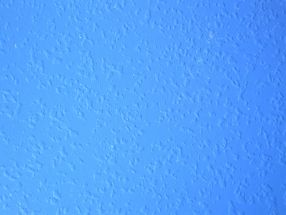 |
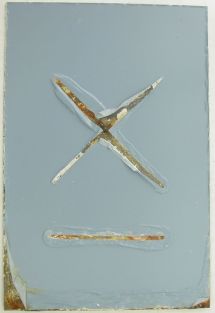 |
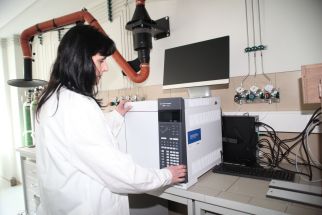 |
In addition to standard tests, we offer the possibility to develop customary tests according to your specific needs. A battery of dc and ac electrochemical methods and immersion tests in combination with procedures listed above constitute a strong basis for proper assessment of material stability.
Service data are often required for confirmation of laboratory results. We oversee field exposures at well-managed natural weathering sites in the Czech Republic and other European countries, USA, China and elsewhere. The accelerated outdoor test by intermittent spraying of a salt solution according to ISO 11474, the SCAB (Simulated Corrosion Atmospheric Breakdown) test, can also be carried out.
| Accelerated corrosion testing will help you reducing detrimental effects of corrosion. | 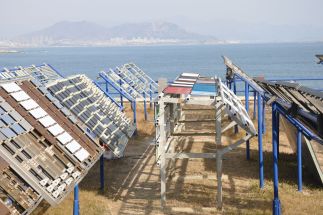 |
Technopark Kralupy is a spin-off of The University of Chemistry and Technology Prague serving the Czech and international industry in the field of building chemistry and similar subjects since 2015.
Department of Metallic Construction Materials
Technopark Kralupy of the University of Chemistry and Technology Prague
Technopark Kralupy VŠCHT Praha
Náměstí G. Karse 7
278 01 Kralupy nad Vltavou
Czech Republic
kovy@technopark-kralupy.cz
Phone: +420 220 446 104, +420 723 242 413
© 2017–2024 Technopark Kralupy
[submenuno] => 1 [urlnadstranka] => [ogobrazek] => [pozadi] => [iduzel] => 26783 [canonical_url] => [skupina_www] => Array ( ) [url] => /corrosion-testing [sablona] => stdClass Object ( [class] => stranka [html] => [css] => [js] => [autonomni] => 1 ) ) [26281] => stdClass Object ( [nazev] => [seo_title] => Photocatalytic materials and technologies [seo_desc] => [autor] => [autor_email] => [obsah] =>
|
Responsible worker |
Expert adviser |
Department of UCT Prague |
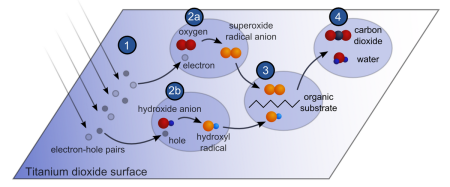
|
1. Offered services |
2. Research and development activities | 3. Equipment |
|
determination of photocatalytic activity in gas phase using ISO standard methods |
development of new photocatalytic materials, pigments and paints |
apparatus for determination of photocatalytic activity in the gas phase according to the ISO methodology (including NOx analyzer. GC-FID chromatograph) |
|
determination of photocatalytic activity using smart inks
|
development of new methods of photocatalytic activity assessment |
equipment for the preparation of photocatalytic coatings, dispersions and active surfaces (dissolver, Turrax homogenizer, ultrasonic bath,) |
|
equipment for application of photocatalytic active layers (dryer, set of round wound rot K-bars) |
||
|
consultation in the field of photocatalytic materials |
standardization |
colorimeter for objective color measurement |
The specialization of the group is focused on evaluation of photocatalytically active surface such as glass, ceramics, paints, concrete, textiles etc. Semiconductor photocatalysis represents promising method for removing pollutants from the environment, whether it is a degradation of toxic substances dissolved in water (pesticides, dyes, pharmaceuticals), in air (VOCs, NOx) or solid phase (fats). Another application is based on the ability to inactivate growth of the microorganism.
Application of photocatalysis can be divided in two main areas:
Cooperation:
|
|
Faculty of Civil Engineering. CTU Prague
|
|
|
|
|
|
|
|
|
|
Determination of photocatalytic activity in gas phase using ISO standard methods
These ISO standard methods are suitable for testing of photocatalytic products (paints, tiles, etc.) in terms of their ability to degrade of pollutants in the air.
Standard ISO methods of photocatalytic activity assessment in gas phase are based on photocatalytic degradation of pollutant such as NOx, formaldehyde in air during irradiation of sample by UV light in trough-flow photoreactor. Photocatalytic activity is than expressed as an amount of degraded pollutant during test.
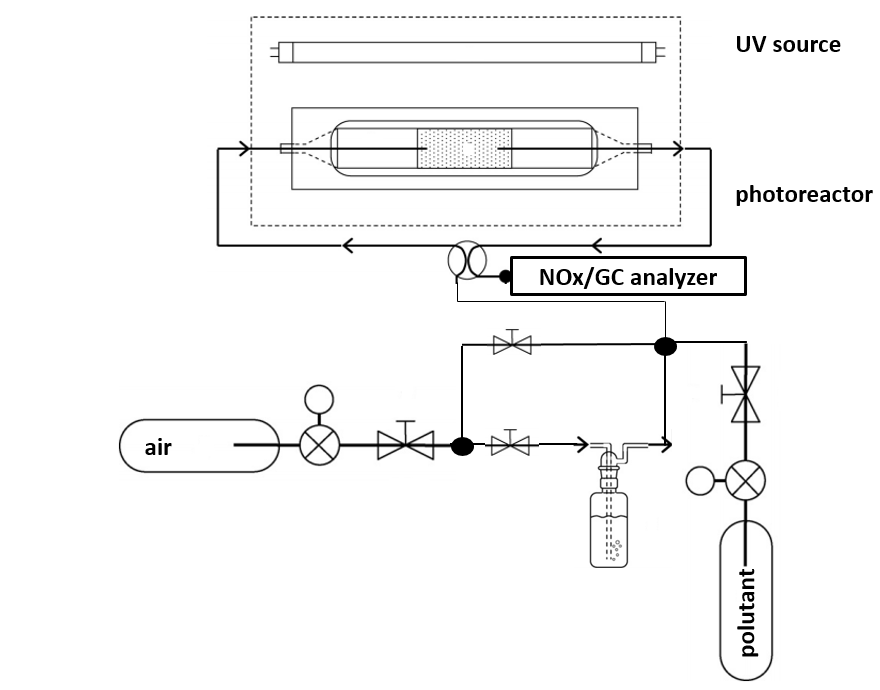
Apparatus for photocatalytic activity assessment in gas phase using ISO methodology
|
standard |
ISO 22197-1 |
ISO 22197-2 |
ISO 22197-3 |
ISO 22197-4 |
|
pollutant |
NO |
acetaldehyde |
toluene |
formaldehyde |
Overview of the installed ISO methods, ISO 22197-3 (removal of toluene) is realized in cooperation with the Department of Inorganic Technology
Dimensions of sample:
The standard sample size is 5x10 cm (thickness 4 and 8 mm).
Determination of photocatalytic activity using new rapid method based on smart inks
This method is suitable for rapid testing of various photocatalytic materials such as self-cleaning glass, paints, and tiles. The principle of method is based on color change of dye in ink which occurs on photocatalytic surface. Currently, this method is in preliminary proceedings for the ISO standard.
Smart inks contain besides dye also glycerol which act as a sacrificial electron donor. Photogenerated holes oxidized glycerol to glyceraldehyde or to other intermediates, excited electrons reduce irreversible dye and this reduction is connected with change of the color. Due to the presence of glycerol, it comes to good charge separation and the reduction of dye is comparing to oxidative reaction (e.g. oxidation of azodye in aqueous solution) very quick and takes few seconds.
The assessment of photocatalytic activity is based on graphical analysis of sample cover with thin film of ink. Photocatalytic activity is than expressed as a time needed for 90% of overall color change of ink film.
Dimension of sample:
At least 8 samples (2,5x 2,5 cm) thickness 3 mm.
On the bottom there is illustrated an example of reduction of Resazurin on commercial self -cleaning glass and on reference sample without active layer. On the self-cleaning glass it comes to reduction of Resazurin to Resorufin which is connected with the color change form blue to pink. On the reference sample without active layer the photocatalytic reduction of Resazurin does not occur.

Color change of Resazurin on commercial self- cleaning glass (up) and reference inactive sample (bottom).
Technopark Kralupy in collaboration with The University of Chemistry and Technology, Prague pursues in fields of microbiology, biotechnology, environmental technology and using of wastes as a secondary raw materials following activities:
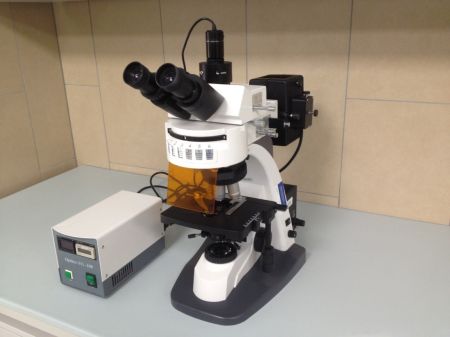
Microscope, equipped with fluorescent attachment and digital camera
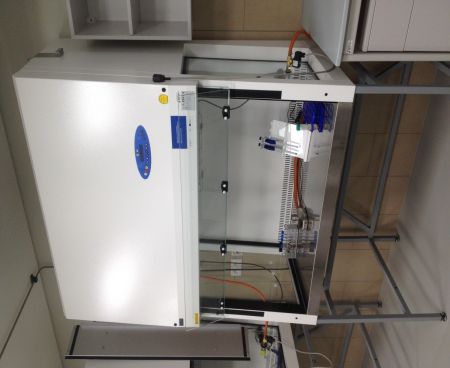
Laminar boxes
At this activity it is used the biodegradable effect of blend of microorganismgenus Acinetobacter and Klebsiella, usually in a demobilized form in a flow bioreactor.
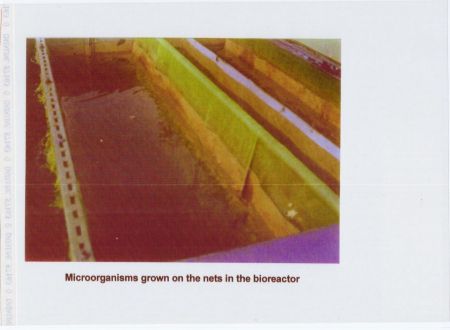
Inner filling of flow bioreactor
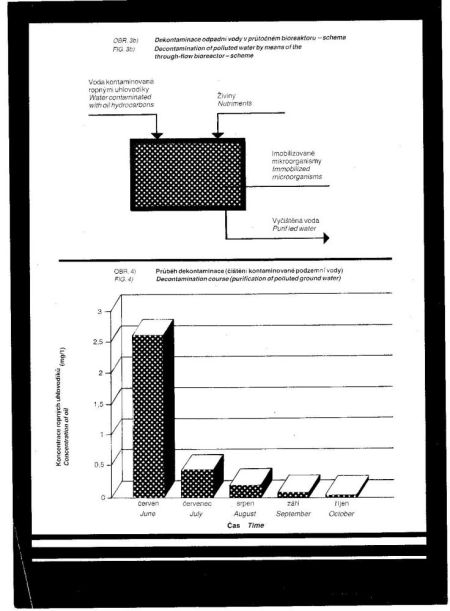
Purification course of ground water contamitated by kerosine using flow bioreactor
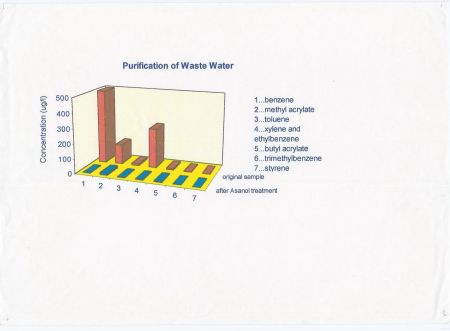
Purification of waste water using flow bioreactor
Bioremediation technology gain sense by a need to decontamitate interal premises of halls, courtyards and historically preservated objects, where is very limited possibility of removing of pollutants from floors, soil, subsoil etc. Typical example is the bioremediation of brick floor of riding hall on the Lednice castle.
Application of mycorrhizal fungi in a combination with bio coal, supplemented by a fertilizers and hydrocolloids is attractive especially by growing forest woody plants on bare spaces, places used for pooring of material of mining, in areas with deficiency of soil moisture, microflora and nutriens.
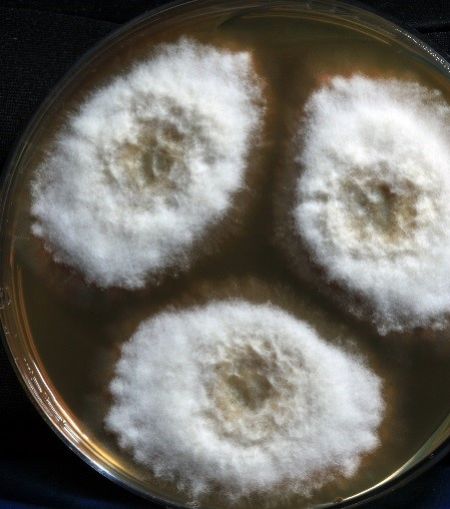
Cultures of ektomycorrhizal fungi on GKCH agar

Planting material inokulated by ektomymycorrhizal fungius
Application of mycorrhizal fungi with bio coal brings following advantages:
- increased lenght of roots
- enlarged surface for receipt of mineral nutriens,
- possibility of exploitation bigger volume of soil,
- increased intake of mineral nutrients and some microelements,
- selective absorption of some ions from a soil,
- better possibility use of very low concentrations of nutriens in a soil,
- better use of some inaccessible nutriens forms,
- improved resistance against invasion of root pests and parasites,
- improved tolerance against toxins,
- improved tolerance against low temperatures and stressful influence of dryness
- improved tolerance to changes of pH
- radical improving of quality and fertility of soil via improvement of water regime,
- improving of cations exchange capacity (CEC),
- reduction of quantity applied artificial fertilizers,
- reduction of flush out of nutrients,
- increasing of available elements Ca, Mg, P and K in soil,
- reduction of content carbon dioxine and next greenhouse gases in air,
- reduction of emissions of nitrous oxide and methane,
- better structure of soil and ability to retain moisture,
- support growth of mycorrhizal fungi include vesicular-arbuscular mycorrhiza,
- increasing of microbial biomass in the soil and soil microbial respiration,
- increasing of soil aggregation in consequence of increase fungal hyphae,
- significant reduction of risk of occurrence of plants diseases
a significant reduction in the risk of occurrence of plant diseases,
- support symbiotic nitrogen fixation in legumes plants.
Using catalysts photoproducts
To prepare the catalysts photoproducts was worked out in which it is used as a starting material waste from titanium engineering production of medical devices and special resistant materials based on titanium.
Obtained photolytic catalysts are used not only in removing the mold, but also for the disposal of organic pollutants contained in the exhaust gases of internal combustion engines, in cigarette smoke in the flue exhibiting undesirable odor of the product range of technologies like.
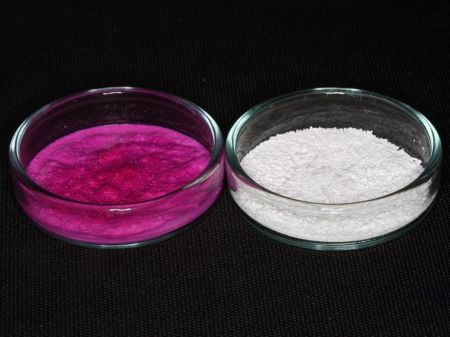
Efficacy photolytic catalyst rhodamine B
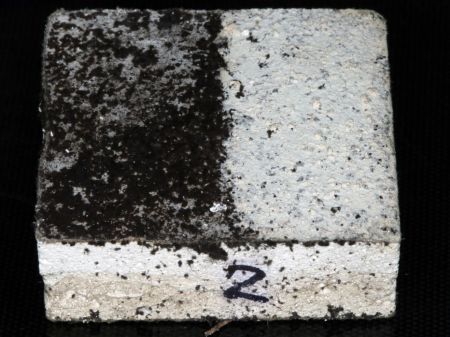
Inhibitory effect on growth of photolytic catalyst Aspergillus niger
Using "smart sponge" Pythium oligandrum
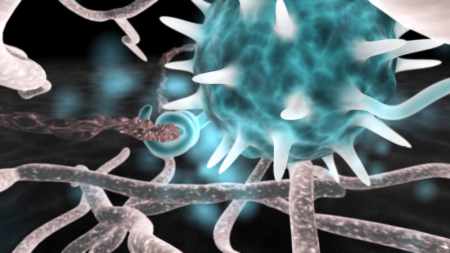
Pythium oligandrum
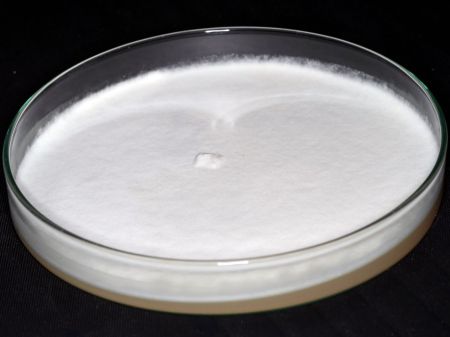
Cultivation of 'smart sponges' Pythium oligandrum on a solid substrate
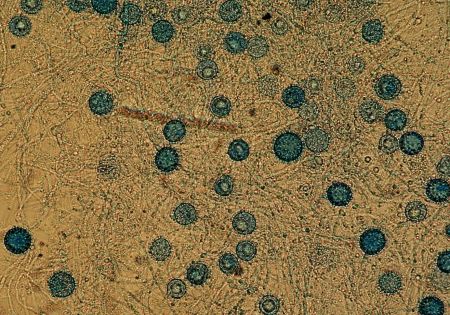
Zoospore Pythium oligandrum
Group of Mikrobial contamination
Miroslav.Marek@vscht.cz
Tel. 220 446 106, 776 805 452
[urlnadstranka] => [ogobrazek] => [pozadi] => [iduzel] => 27960 [canonical_url] => [skupina_www] => Array ( ) [url] => /microbiology [sablona] => stdClass Object ( [class] => stranka [html] => [css] => [js] => [autonomni] => 1 ) ) [27957] => stdClass Object ( [nazev] => [seo_title] => Laboratory service [seo_desc] => Laboratory service [autor] => [autor_email] => [obsah] =>
Central laboratory service |
||||||||||||||||
|
Head of department of central laboratory |
Researcher |
Guarantory institute of UCT Prague |
||||||||||||||
| RNDr František Novák, CSc. |
Mgr. Hana Hrabalová |
Central laboratory of UCT Prague |
||||||||||||||
|
|
|
|
||||||||||||||
|
Central laboratory works in Technopark for internal branch project groups and as a service for external customers. It is equipped by the apparates installed in central laboratory and uses apparates of other laboratories of branches project groups too.
Another important function of department of Central laboratory service of Technopark Kralupy is a possibility to provide technical consultancy in field of materials and changes of theirs properties. These services can be use for determining composition of unknown samples or recommending of suitale method to finding out of required informations. |
||||||||||||||||
Overwiev of used methods and offered services |
Standardized methods |
Installed apparates |
||||||||||||||
|
Thermic analysis UV-VIS spectrometry Raman and infrared spectrometry ICP-OES spectrometry
|
|
|
||||||||||||||
Thermic analysis |
|
|
|
Installed apparat: Setaram Evo TGA/DTA
– Measuring range to 1400 (1600) ° C – Sample weight 30 – 40 mg – prediction of behaviour of materials by increased temperatures
Applictions: Owewrseeing of thermal dissociation of homogenous materials (weight loss, exo- and edothermic processes) of:
|
UV-Vis spectrophotometry |
|
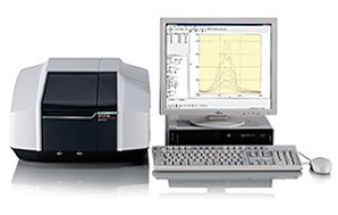 |
Installed apparatus: UV-Vis-NIR spectrophotometr Shimadzu UV-2600
Applications:
|
Infrared and Raman spectrophotometry |
|
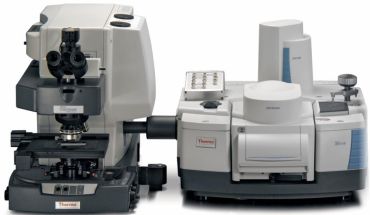 |
Installed apparatus: FTIR-Raman spectrometr Nicolet iS50
Applications: Characterization and identification of:
|
Optical emission spectrometry with inductively bounted plasma |
|
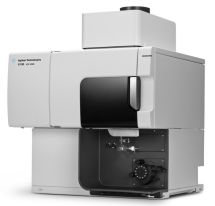 |
Installed apparatus: Spectrometr Agilent 5100 ICP-OES
Applications: Determination of trace concentrations of metallic ions
|
Summary of all activities of Metallic Construction Materials group is here.
Information on the actual corrosion aggressiveness of environment is crucial for effective corrosion protection. Implementation of on-line and real time monitoring enables operators to take immediate countermeasures if corrosion is accelerating and decrease thus the negative impact and costs of corrosion.
The principle of the resistometric monitoring is simple and yet highly effective. The electric resistance of a measuring element made of the material of interest increases as its cross-sectional area decreases due to corrosion. In practice, two such elements are built into a probe. One element is exposed to the corrosive environment and corrodes, whereas the other element is shielded and, thus, protected from corrosion. The resistances of both elements are measured at the same time and resistivity changes due to varying temperature are compensated for. Based on the initial cross-sectional area of the exposed element, the cumulative metal loss at the time of reading can be determined.
|
|
|
|
Measurement with brass sensors with different coatings exposed in air polluted with acetic acid
|
Schematic drawing shows a resistometric sensor for atmospheric applications with the sensing part on the left hand side and the reference part on the right |
We offer design, installation, maintenance and data evaluation of corrosion monitoring systems.
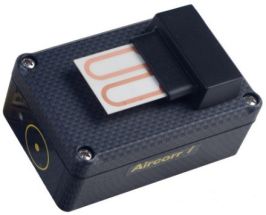 |
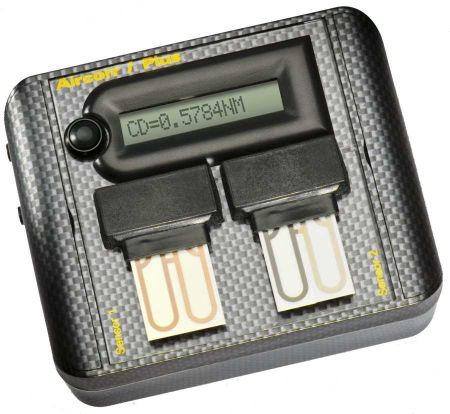 |
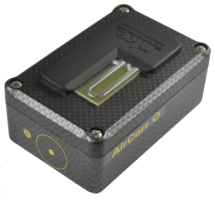 |
Advantages of MetriCorr and AirCorr sensors and loggers we use:
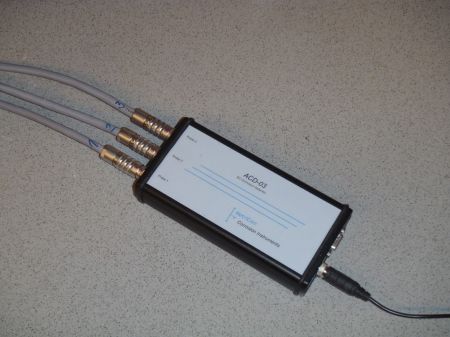
Resistometric sensors can be used for monitoring of
Technopark Kralupy is a spin-off of The University of Chemistry and Technology Prague serving the Czech and international industry in the field of building chemistry and similar subjects since 2015.
Department of Metallic Construction Materials
Technopark Kralupy of the University of Chemistry and Technology Prague
Technopark Kralupy VŠCHT Praha
Náměstí G. Karse 7
278 01 Kralupy nad Vltavou
Czech Republic
kovy@technopark-kralupy.cz
Phone: +420 220 446 104, +420 723 242 413
© 2017–2020 Technopark Kralupy
[urlnadstranka] => [obrazek] => [iduzel] => 26784 [canonical_url] => [skupina_www] => Array ( ) [url] => /corrosion-monitoring [sablona] => stdClass Object ( [class] => stranka [html] => [css] => [js] => [autonomni] => 1 ) ) [27729] => stdClass Object ( [nazev] => About [seo_title] => About Us [seo_desc] => [autor] => [autor_email] => [perex] =>Profile
Technopark Kralupy of The University of Chemistry and Technology, Prague is a scientific – technical park with focussion on innovation in building chemistry and in related material fields.
[ikona] => [obrazek] => 0003~~M9Qz1IsvyS8oNQQA.jpg [obsah] =>was established by the University of Chemistry and Technology, Prague (hereafter UCT Prague) as their separated research facility with the use of European subsidies.
Technopark Kralupy was built by UCT Prague in 2013-2014 when reconstructing the abandoned industrial mill in the center of Kralupy nad Vltavou.
scientific - research institute focusing on building chemistry and other related fields.
a team of highly qualified researchers, capable of carrying out even the most demanding assignments in the field of construction chemicals and materials engineering.
We also have the top laboratory equipment, allowing us to take even the most demanding challenges in the field of research and development.
University of Chemistry and Technology, Prague is a project whose goal was to build and at the time of its sustainability further develop infrastructure for research and innovation activities of the chemistry technologies.
the services of qualified applied research and development using the potential of experienced researchers and young researchers at universities too.
also the possibility of renting our labs for your research activities.
consultancy and advisory activities.
is also popularizing science among school students in the region.
meets the requirments internationally recognized definition of science and technology park that provides highly qualified services.
Technopark Kralupy is a spin-off of The University of Chemistry and Technology Prague serving the Czech and international industry in the field of building chemistry and similar subjects since 2015.
[iduzel] => 27729 [canonical_url] => //www.technopark-kralupy.cz/about [skupina_www] => Array ( ) [url] => /about [sablona] => stdClass Object ( [class] => stranka_obrazek_sloupce [html] => [css] => [js] => [autonomni] => 1 ) ) [27751] => stdClass Object ( [nazev] => Offered services [seo_title] => Services [seo_desc] => [autor] => [autor_email] => [obsah] =>Ob
[iduzel] => 27751 [canonical_url] => //www.technopark-kralupy.cz/services [skupina_www] => Array ( ) [url] => /services [sablona] => stdClass Object ( [class] => nastenka [html] => [css] => [js] => [autonomni] => 1 ) ) [27755] => stdClass Object ( [nazev] => Branch focus [seo_title] => Branch Focus [seo_desc] => [autor] => [autor_email] => [obsah] =>n
[iduzel] => 27755 [canonical_url] => //www.technopark-kralupy.cz/branch-focus [skupina_www] => Array ( ) [url] => /branch-focus [sablona] => stdClass Object ( [class] => nastenka [html] => [css] => [js] => [autonomni] => 1 ) ) [27804] => stdClass Object ( [nazev] => People [seo_title] => People [seo_desc] => [autor] => [autor_email] => [perex] => [ikona] => [obrazek] => [obsah] => [iduzel] => 27804 [canonical_url] => //www.technopark-kralupy.cz/people [skupina_www] => Array ( ) [url] => /people [sablona] => stdClass Object ( [class] => stranka_sloupce_submenu [html] => [css] => [js] => [autonomni] => 1 ) ) [27805] => stdClass Object ( [nazev] => [seo_title] => Information services [seo_desc] => [autor] => [autor_email] => [perex] => [ikona] => [obrazek] => [ogobrazek] => [pozadi] => [obsah] => [urlnadstranka] => [iduzel] => 27805 [canonical_url] => [skupina_www] => Array ( ) [url] => /informations [sablona] => stdClass Object ( [class] => stranka_submenu [html] => [css] => [js] => [autonomni] => 1 ) ) [27806] => stdClass Object ( [nazev] => Contact [seo_title] => Contact [seo_desc] => [autor] => [autor_email] => [perex] =>
Technopark Kralupy Vysoké školy chemicko-technologické v Praze
Náměstí G. Karse 7/2,
278 01 Kralupy nad Vltavou
Czech Republic
Coordinates
coordnates GPS: 50°14'28.793"N, 14°18'43.325"E
Phone
+420 220 446 100
e-mail
info@technopark-kralupy.cz
[ikona] => [obrazek] => 8_R1jzc0sjDMN8wFAA.jpg [pozadi] => [obsah] =>
Access road by a car from Prague - Dejvice (headquarters of The University of Chemistry and Technology)
Drive in direction to Suchdol and keep straight on taking the road Nr. 240. You will drive through village Černý Vůl, Velké Přílepy and Tursko to the outskirt of town of Kralupy. Drive through Kralupy in direction Veltrusy and Neratovice. Past the main roundabout go under the railway and on the next roundabout turn to the right. You will see the building of Technopark in front of you. Reserved parking space for visitors and employees of the Technopark is located behind the building of Technopark – go past the building of Technopark and turn right.
To pick up the barrier in front of the car park, please contact our reception (reception opening hours 7.00 - 15.00) via the intercom or the person you are visiting directly.
Road by a car from Dejvice (map)
Access road by a car from Prague taking the highway D8
Use city exit in direction to Teplice, that converts into the motorway D8. Leave the motorway on EXIT 9 Úžice (cca 10km from outskirts of Prague). From the roundabout turn to Kralupy and Veltrusy direction, on the next roundabout go straight and on the next crossroad turn to right. Drive cca 100m, to the next roundabout and turn left to the Kralupy. Now keep straight to the periphery of Kralupy and drive up to large roundabout next to the industry area. Turn to left to the housing estate of town, and cross the all the crossroads straight to the bridge. Past the bridge on the next roundabout turn to left. The building of Technopark you will see in front of you. Reserved parking space for visitors and employees of the Technopatk you will find behind the building of Technopark – go past the building of Technopark and turn right.
By a train
From Prague – “Hlavní nádraží” (Main station), station “Masarykovo nádraží”, station “Praha – Holešovice” or train stop “Podbaba” depart the trains in direction to Kralupy. This is the nearest stop from headquarters of The University of Chemistry and Technology. The stop is located close the terminal stop of tram “Podbaba” . Go behind the petrol station and use the underpass to come to peron of the stop in direction Kralupy. The journey takes about 25 min. From the building of station “Kralupy nad Vltavou” turn to the left and after cca 50m turn to the right to street “Žižkova” in direction to “Komenského” square. You will find the building of the Technopark on the left side of the street.
By a bus
From Prague – station of the subway “Kobylisy” (line “C”) depart at hourly intervals buses Nr. 370 in direction Kralupy nad Vltavou. The journey takes cca 50 min. Get off the bus on bus stop “Městský úřad Kralupy”, this station is next to Technopark. The entrance is on the opposite side of building.
How you will find us in Kralupy (map)
[urlnadstranka] => [iduzel] => 27806 [canonical_url] => [skupina_www] => Array ( ) [url] => /contact [sablona] => stdClass Object ( [class] => stranka_obrazek [html] => [css] => [js] => [autonomni] => 1 ) ) [1485] => stdClass Object ( [nazev] => Stránka nenalezena [seo_title] => Stránka nenalezena (chyba 404) [seo_desc] => Chyba 404 [autor] => [autor_email] => [obsah] =>
Požadovaná stránka se na webu (již) nenachází. Kontaktuje prosím webmastera a upozorněte jej na chybu.
Pokud jste změnili jazyk stránek, je možné, že požadovaná stránka v překladu neexistuje. Pro pokračování prosím klikněte na home.
Děkujeme!
[urlnadstranka] => [ogobrazek] => [pozadi] => [iduzel] => 1485 [canonical_url] => [skupina_www] => Array ( ) [url] => /[error404] [sablona] => stdClass Object ( [class] => stranka [html] => [css] => [js] => [autonomni] => 1 ) ) [10947] => stdClass Object ( [nazev] => Přístup odepřen (chyba 403) [seo_title] => Přístup odepřen [seo_desc] => Chyba 403 [autor] => [autor_email] => [perex] => [ikona] => zamek [obrazek] => [ogobrazek] => [pozadi] => [obsah] =>Nemáte přístup k obsahu stránky.
Zkontrolujte, zda jste v síti VŠCHT Praha, nebo se přihlaste (v pravém horním rohu stránek).
[urlnadstranka] => [iduzel] => 10947 [canonical_url] => [skupina_www] => Array ( ) [url] => /[error403] [sablona] => stdClass Object ( [class] => stranka_ikona [html] => [css] => [js] => [autonomni] => 1 ) ) ) [iduzel] => 25476 [canonical_url] => [skupina_www] => Array ( ) [url] => [sablona] => stdClass Object ( [class] => [html] => [css] => [js] => [autonomni] => ) ) ) [sablona] => stdClass Object ( [class] => web [html] => [css] => [js] => [autonomni] => 1 ) [api_suffix] => )stdClass Object
(
[nazev] => People
[seo_title] => People
[seo_desc] =>
[autor] =>
[autor_email] =>
[perex] =>
[ikona] =>
[obrazek] =>
[ogobrazek] =>
[pozadi] =>
[obsah] =>
[submenuno] =>
[urlnadstranka] =>
[newurl_domain] => 'www.technopark-kralupy.cz'
[newurl_jazyk] => 'en'
[newurl_akce] => '/people'
[newurl_iduzel] => 27804
[newurl_path] => 8549/7608/25473/25476/27804
[newurl_path_link] => Odkaz na newurlCMS
[iduzel] => 27804
[platne_od] => 08.08.2016 16:32:00
[zmeneno_cas] => 08.08.2016 16:39:49.040008
[zmeneno_uzivatel_jmeno] => Karel Hrušovský
[canonical_url] => //www.technopark-kralupy.cz/people
[idvazba] => 35380
[cms_time] => 1713865963
[skupina_www] => Array
(
)
[slovnik] => Array
(
)
[poduzel] => stdClass Object
(
[28005] => stdClass Object
(
[nazev] => Personnel policy of Technopark
[seo_title] => Personnel policy of Technopark
[seo_desc] => Personnel policy of Technopark
[autor] =>
[autor_email] =>
[obsah] => Technopark Kralupy of The University of Chemistry and Technology in Prague (Technopark) is a customer-oriented science and technology park and its priorities are customers, service quality and motivated staff.
Personnel work in Technopark will therefore be guided by the following principles:
In labor relations, to observe and respect the legislation, internal regulations and directives of ICT Prague Technopark issued for this area.
Observe the principle of equal opportunities in recruitment, placement, compensation, training, and career management staff and scientific workers Technopark, honoring the principles of scientific research, interdisciplinary collaboration, open communication and social responsibility to create conditions for a progressive innovative solutions.
On a project basis to create research teams to promote their effective composition, collaboration and exchange of experiences between different groups across the Technopark. Research groups to create a team atmosphere and proactive.
Staff research groups and employees of Technopark lead to the creation of conditions for creative research work and harmonious cooperation within the Technopark in order to achieve and maintain a competitive quality of services provided Technopark.
Promote training and development, which will be based on the needs of the activities of Technopark and its employees, while honoring the principle of full utilization of the talent, creativity and the benefits of teamwork. Any employee Technopark agree personal development plan that will be periodically evaluated.
Each employee receives Technopark for another term specific personal tasks. These personal tasks will be evaluated after a period of superiors.
Professionals working in Technopark as its employees or members of research groups will participate in the preparation of accreditation and certification and subsequent recertification. Familiar with and respect the principles of quality systems and will cooperate in their implementation.
Intellectual property generated in actions Technopark is inalienable, and will always be judged by the law and will follow the framework contracts between ICT and contractors.
Encourage employees with a sense of belonging to the Technopark and its activities, leading employees and other workers to spread the good name of the Technopark at universities and in public.
[poduzel] => Array
(
)
[iduzel] => 28005
[canonical_url] => //www.technopark-kralupy.cz/people/policy
[skupina_www] => Array
(
)
[url] => /people/policy
[sablona] => stdClass Object
(
[class] => stranka
[html] =>
[css] =>
[js] =>
[autonomni] => 1
)
)
[28007] => stdClass Object
(
[nazev] => Education and personal development
[seo_title] => Education and personal development
[seo_desc] => Education and personal development
[autor] =>
[autor_email] =>
[obsah] => Qualified and motivated researchers and specialists of the Technopark are the precondition for success and satisfaction of its customers. Therefore, in the Technopark is put the great emphasis on training and personal development of researchers and technical - administrative staff.
To continue their studies
The researchers, who come from universities, have the opportunity to continue their education in master's or doctoral studies.
The newly initiated study
Members of the project team and staff Technopark may commence studies in fields related to the activity they perform in Technopark. It is also possible to realize part of their studies in solving projects in Technopark
Specialization
Another type of education is expanding, respectively. deepening specialization in the subject, which the researcher or specialist devotes Technopark. This is how a graduate or other specialized studies and fellowships at other institutions, including foreign ones. Here Technopark works closely with tribal constitution of UCT Prague.
Soft skills and team training
Technopark supports activities designed to increase the efficiency of management, team management, the application of project management principles, but also deepening presentation and communication skills. Trainings are conducted within teams and departments Technopark both internally and outside the building for special events.
Team skills are developed in the framework of Technopark in various forms in order to build effectively communicating and collaborating teams capable of addressing the challenges and innovations. Technopark promotes communication and collaboration across disciplines.
[poduzel] => Array
(
)
[iduzel] => 28007
[canonical_url] => //www.technopark-kralupy.cz/people/education
[skupina_www] => Array
(
)
[url] => /people/education
[sablona] => stdClass Object
(
[class] => stranka
[html] =>
[css] =>
[js] =>
[autonomni] => 1
)
)
[28006] => stdClass Object
(
[nazev] => Our employees
[seo_title] => Our employees
[seo_desc] =>
[autor] =>
[autor_email] =>
[perex] =>
[ikona] =>
[obrazek] =>
[pozadi] =>
[obsah] => Professionals working in Technopark, according to the activity performed are divided into two basic groups:
Management, administration, technicians
The administrative-managerial, advisory and technical activities ensures a permanent group of workers - employees of Technopark Kralupy of The University of Chemistry and Technology in Prague.
These workers:
manage administrative and economic activity of the Technopark, negotiate with business partners, representatives of universities, experts and promote its services
provide security, management, maintenance and trouble-free operation of the building
carry out technical and economic support for research activities of project groups and their workers
providing services to third parties - design and innovation consulting, long-term and short-term rentals and technical - organizational and other services arising from the activities of Technopark
Researchers of Technopark
Researchers working in Technopark operate under industry-oriented project groups Technopark, more Branch focus.
These workers:
carry out research, development and innovation activities (R & D), testing, analysis, and other professional activities
work in project groups and are employed in Technopark on a project basis, therefore, for the duration of the project
the activity of research groups can work part-time
Inclusion of students, researchers and practitioners students
Students
The Technopark Kralupy of the UCT Prague students can act within the framework of research projects, especially master's or doctoral studies. A student is an employee while working in the UCT Technopark ensuring adherence to high professional standards of work in Technopark. Besides students of the UCT Prague are welcome also students of other universities. Employment of students is done on a project basis, and can be implemented on a part-time job.
Researchers
Within the framework of projects and other research and development in the Technopark may work scientists. Employment of researchers is done on a project basis.
Practitioners
In some projects, and other research and development find their employment also workers who come from areas outside of universities. Criterion is solved particular contribution to the project or contract, which is a particular research group engaged in Technopark.
[urlnadstranka] =>
[poduzel] => stdClass Object
(
[28395] => stdClass Object
(
[nazev] => Petr Antoš, Dr., Ing., Ph.D., EUR ING, EurChem
[seo_title] => Antos
[seo_desc] =>
[autor] =>
[autor_email] =>
[obsah] => |
email: petr.antos@vscht.cz phone: +420220446110,130 |
|
|
|
Photos displayed with the consent of the photographed person. |
2000-2004 University of Pardubice, Faculty of Chemical Technology, technology of macromolecular substances (doctoral studies)
1992-1996 University of Pardubice, Faculty of Chemical Technology, inorganic technology (doctoral studies)
1975-1980 University of Chemistry and Technology, Pardubice, Technical Analytical and Physical Chemistry (master studies)
Membership in professional organizations
Editor in chief of magazine "Chemagazín"
Member of the Scientific Board of Faculty of Chemical Technology University of Pardubice
Member of the Board of doctoral study program "Surface Engineering" University of Pardubice
Member FATIPEC (Fédération d‘ Associations de Techniciens des Industries des Peintures, vernis, émaux et encres d’imprimerie de l’Europe Continentale)
Membership in Slovak society for surfacing
Membership in the Czech Chemical Society - a committee member expert group for paints, resins and pigments
Membership in Czech Society of Industrial Chemistry - a member of the Main Committee
A member of the local branch for building chemistry-Uniplast Liberec of Czech construction company
Club membership EUR ING
Awards
Languages
German
English
Selected projects
* Advanced materials and technologies for the reconstruction of historic buildings, ev. no. FT-TA4 / 070.
*Fillers based calcined kaolin and their use in the manufacture of paints and polymer composites, ev. no. 2A-1TP1 / 014.
* Mineral resources for heritage restoration, ev. no. DF11P01OVV005.
* Low viscosity inorganic binders and their applications, ev. no. TA01010160.
* Use of shale as an opening material for production of foundry molds and cores ev. no. FR-TI1 / 211.
Publications
Courses
| 1981-1983 | Institute MoI Kralupy nad Vltavou, systems engineering and data processing (graduate studies) |
| 1983-1985 | Institute MoI Kralupy nad Vltavou, THN in the management of the chemical industry (graduate studies) |
| 1992-1993 | University of Technology – technological faculty Zlín, Cleaner production (graduate studies) |
| 1995-1997 | University of Pardubice, Faculty of Chemical Technology, New knowledge and experience in the field of paints and finishes (license studies) Certificate of professional competence for managing the work with ionizing radiation. Certificate of the Award of Designation of European Engineer, Certificate No. 24138 dated 11. 2. 1999. Certificate European Chemist Registration Board, Record of ECRB made on 12 5th, 2000 under No. 727th |
Other activities
[urlnadstranka] => [iduzel] => 28395 [canonical_url] => [skupina_www] => Array ( ) [url] => /people/employees/antos-en [sablona] => stdClass Object ( [class] => stranka [html] => [css] => [js] => [autonomni] => 1 ) ) [28402] => stdClass Object ( [nazev] => Michal Baudys, Ing., PhD. [seo_title] => Baudys [seo_desc] => [autor] => [autor_email] => [obsah] =>|
email: baudysm@vscht.cz phone: +420 22044 6131, 6109 |
|
2016 Ph.D. University of Chemistry and Technology, Prague
2010 Ing. University of Chemistry and Technology, Prague
2008 Bc. University of Chemistry and Technology, Prague
|
2015 |
- |
present |
scientistic worker Technopark Kralupy of University of Chemistry and Technology, Praha independent scientific-research activities |
|
2010 |
- |
2015 |
scientistic worker Institute of Inorganic Technology, University of Chemistry and Technology, Prague independent scientific-research activities |
|
2009 |
Research Assistant DCH - Sincolor a.s. preparation of paints |
||
|
2005 |
- |
2006 |
lecturing Teaching chemistry circle |
Membership in professional organizations
Awards
2011 Scholarship of Votoček
2009 Award of Agrofert
Work: Preparation and properties of self-cleaning epoxy coatings
2009 1st place SVK - Section inorganic technology
Work: Preparation and properties of self-cleaning coatings
2008 2 st place SVK - Section inorganic technology
Work: The photocatalytic degradation of azo dye Orange II in suspensions and layers of TiO2 photocatalysts
Languages
German level C1
passing the exam: Deutsches Sprachdiplom der Kultusminister Konferenz, Stufe II
English fluent written and spoken, basic level
Selected projects
2013 - 2014 Smart Inks as a Standard Testing Tool for Self Cleaning Surfaces - INTEC (FP7-NMP-2012-CSA-6, GA no. 319210) http://www.fp7-intec.eu/
2005 - 2011 Research Centre for Nanosurface Engineering "NANOPIN"(Projekt 1M0577), http://www.nanopin.eu/index.html
Publications
1) M.Baudys, J. Krýsa, A. Mills Smart inks as photocatalytic activity indicators of self clenaing paints, Catalysis Today, Article in Press (2016), doi:10.1016/j.cattod.2016.04.041
2) M. Baudys, J. Krýsa, M. Zlámal, A. Mills, Chemical Engineering Journal 261 (2015) 83-87.
3) M. Baudys, M. Zlámal, J. Krýsa, J. Jirkovsky, P. Kluson, Reaction Kinetics, Mechanisms and Catalysis 106 (2012) 297-311.
4) J. Krýsa, M. Baudys, A. Mills, Catalysis Today 240 (2015) 132-137.
5) J. Krýsa, M. Baudys, M. Zlámal, H. Krýsová, M. Morozová, P. Klusoň, Catalysis Today 230 (2014) 2-7.
6) Mills, J. Hepburn, D. Hazafy, C. O'Rourke, J. Krysa, M. Baudys, M. Zlamal, H. Bartkova, C.E. Hill, K.R. Winn, M.E. Simonsen, E.G. Søgaard, S.C. Pillai, N.S. Leyland, R. Fagan, F. Neumann, C. Lampe, T. Graumann, Journal of Photochemistry and Photobiology A: Chemistry 272 (2013) 18-20.
7) Mills, J. Hepburn, D. Hazafy, C. O'Rourke, N. Wells, J. Krysa, M. Baudys, M. Zlamal, H. Bartkova, C.E. Hill, K.R. Winn, M.E. Simonsen, E.G. Søgaard, S. Banerjee, R. Fagan, S.C. Pillai, Journal of Photochemistry and Photobiology A: Chemistry 290 (2014) 63-71.
8) M. Morozova, P. Kluson, P. Dzik, M. Vesely, M. Baudys, J. Krysa, O. Solcova, Journal of Sol-Gel Science and Technology 65 (2013) 452-458.
Courses
2015 Taking of samples course
2011 Vibrational spectroscopy course
Other activities
Organizing committee of conference: Czech-Austrian workshop: New trends in application of photo and electrocatalysis
[iduzel] => 28402 [canonical_url] => //www.technopark-kralupy.cz/people/employees/baudys-en [skupina_www] => Array ( ) [url] => /people/employees/baudys-en [sablona] => stdClass Object ( [class] => stranka [html] => [css] => [js] => [autonomni] => 1 ) ) [37837] => stdClass Object ( [nazev] => Adéla Fridrichová, Ing., Ph.D. [seo_title] => Fridrichova [seo_desc] => Fridrichova [autor] => [autor_email] => [obsah] =>|
email: Adela.Fridrichova@vscht.cz phone: +420 22044 6117 |
|
2017 Ph.D. University of Pardubice, Faculty of Chemical Technology
2011 Ing. University of Pardubice, Faculty of Chemical Technology
2009 Bc. University of Pardubice, Faculty of Chemical Technology
|
2016 |
- |
present |
scientistic worker Technopark Kralupy of University of Chemistry and Technology, Praha independent scientific-research activities |
|
2011 |
- |
2016 |
technical worker J. Heyrovsky Institute of Physical Chemistry of the CAS, v. v. i.,Praha independent research activities |
Awards
2011 Price of the endowment fund of Miroslav Jurečka in competition for the best dissertations, 3rd prize
Languages
English
German
Publications
Adéla Fridrichová, Aleš Růžička, Martin Lamač, Michal Horáček
Structural Differences of Half-sandwich Complexes of Scandium and Yttrium containing Bulky Substituents
Inorganic Chemistry Communication, 76, 62–66, 2017
Adéla Fridrichová, Vojtech Varga, Jiří Pinkas, Martin Lamač, Aleš Růžička, Michal Horáček
Yttrocene Chloride and Methyl Complexes with Variously Substituted Cyclopentadienyl Ligands: Synthesis, Characterization, and Reactivity toward Ethylenek
European Journal of Inorganic Chemistry, 3713-3721, 2016
Roman Olejník, Zdeňka Padělková, Adéla Fridrichová, Michal Horáček, Jan Merna, Aleš Růžička
Structure and potential applications of amido lanthanide complexes chelated by bifunctional β-diketiminate ligand
Journal of Organometallic Chemistry, 759, 1-10, 2014
Adéla Fridrichová, Barbora Mairychová, Zdeňka Padělková, Antonín Lyčka, Klaus Jurkschat, Roman Jambor, Libor Dostál
Straightforward synthesis of novel cyclic metallasiloxanes supported by an N,C,N-chelating ligand
Dalton Transactions, 42, 16403, 2013
Adéla Fridrichová, Tomáš Svoboda, Roman Jambor, Zdeňka Padělková, Aleš Růžička, Milan Erben, Robert Jirásko, Libor Dostál
Synthesis and Structural Study on Organoantimony(III) and Organobismuth(III) Hydroxides Containing an NCN Pincer Type Ligand
Organometallics, 28, 5522-5528, 2009
Courses
Université de Strasbourg, Laboratoire de Chimie de Coordination, France
Theme: Nickel Complexes with the zwitterionic benzoquinonemonoimine ligand
[iduzel] => 37837 [canonical_url] => //www.technopark-kralupy.cz/people/emploees/fridrichova-en [skupina_www] => Array ( ) [url] => /people/emploees/fridrichova-en [sablona] => stdClass Object ( [class] => stranka [html] => [css] => [js] => [autonomni] => 1 ) ) [28406] => stdClass Object ( [nazev] => Hana Hrabalová, Mgr. [seo_title] => Hrabalová [seo_desc] => [autor] => [autor_email] => [obsah] =>|
email: Hana.Hrabalova@vscht.cz phone: +420 22044 6123, 6113 |
|
1988 Mgr. Faculty of Education Charles University Praha
|
2015 |
- |
present |
Chemist - analyst Technopark Kralupy University of Chemistry and Technology, Praha chemical analysis |
|
2004 |
- |
2015 |
Chemist - analyst Dekonta a.s., Dřetovice active cooperation in grant projects, chemical analysis, coordination of operation of laboratories, accreditation of analytical methods |
|
1992 |
- | 2004 |
Teacher Elementary School Komenského, Kralupy nad Vltavou teaching mathematics and physics |
|
1988 |
- |
1992 |
Highschool teacher Dvořákovo gymnázium Kralupy nad vltavou teaching mathematics and physics |
Membership in professional organizations
Awards
Languages
English advanced level
Russian advanced level
German passive knowledge
Selected projects
| 2012 - 2014 |
Development and application of technology combined decontamination units for the removal of VOC emissions, including odor substances |
| 2009 - 2014 |
Biological decontamination of materials on site Všebořice SITA CZ |
| 2013 - 2014 |
Production and use of special activated carbon to large-scale environmental applications |
| 2008 - 2012 |
Research of chemical and physical properties of humic substances, their biological activity and mechanisms of action on microorganisms, plant and animal cells, depending on their structure |
| 2007 - 2011 |
Research progressive methods processing waste into secondary energy sources (alternative fuels) |
Publications
Courses
2003 - 2016
Determination of NEL and the EL in waters and soils – Nicolet CZ
Course measurement of vibration spectra - Spectroscopic Society of Marek Marci
Determination of NEL and the EL in waters and soils using FTIR spectroscopy – Nicolet.cz
Theoretical basics of IR microscopy – Nicolet CZ
FTIR diagnostics petroleum products – Nicolet CZ
New trends in chromatography – Sigma Aldrich
LC a LC/MS Tour – Agilent Technologies
Course: Sampling rate for workers of water management and control laboratories
Presentation Skills Course – TUTR
Course Corel Draw – Jubela,s.r.o
Gas chromatography Course – Pragolab
1998 - 2003 education courses in mathematics, chemistry and work on PC
Other activities
[iduzel] => 28406 [canonical_url] => //www.technopark-kralupy.cz/people/emploees/hrabalova-en [skupina_www] => Array ( ) [url] => /people/emploees/hrabalova-en [sablona] => stdClass Object ( [class] => stranka [html] => [css] => [js] => [autonomni] => 1 ) ) [37834] => stdClass Object ( [nazev] => Oleg Kikhtyanin, Ing., Ph.D. [seo_title] => Kikhtyanin [seo_desc] => Kikhtyanin [autor] => [autor_email] => [obsah] =>|
email: Oleg.Kikhtyanin @vscht.cz phone: +420 22044 6131 |
|
2012 Ph.D. Tomsk State University
1984 Ing. Novosibirsk State University
|
2017 |
- |
present |
Researcher Technopark Kralupy of University of Chemistry and Technology, Praha independent scientific-research activities |
|
2013 |
- |
2016 |
Senior Researcher UNICRE (VUAnCh), Litvinov, Czech Republic independent scientific-research activities |
|
2000 |
- | 2013 |
Researcher Boreskov Institute of Catalysis, Novosibirsk independent scientific-research activities |
|
1992 |
- |
2000 |
Head of Group of Organic Synthesis Scientific-Engineering Centre “Zeosit”, Novosibirsk scientific-managerial activities |
|
1984 |
- |
1992 |
Junior Researcher Boreskov Institute of Catalysis, Novosibirsk scientific-research activities |
Languages
Russian native speaker
English advanced level, B2
Selected projects
2015 - 2016 Analysis of the relationship between structure / basicity Mg / Al, Ca / Al and Zn / Al mixed oxides and their activity in the aldol condensation (GACR)
2014 - 2016 Inteligent Design of Nanoporous Adsorbents and Catalysts (GACR)
2014 - 2016 The preparation of hydrocarbons suitable for jet fuel two-stage conversion of triglycerides of carboxylic acids in the presence of hydrogen (KONTAKT II, Ministry of Education)
Publications
Ramos, R., Tišler, Z., Kikhtyanin, O., Kubička, D.,k
Solvent effects in hydrodeoxygenation of furfural-acetone aldol condensation products over Pt/TiO2 catalyst
Applied Catalysis A: General 2017, 530, pp. 174-183
Kikhtyanin, O., Bulánek, R., Frolich, K., Čejka, J., Kubička, D.,
Aldol condensation of furfural with acetone over ion-exchanged and impregnated potassium BEA zeolites
Journal of Molecular Catalysis A: Chemical 2016, 424, pp. 358-368
Nguyen Thanh, D., Kikhtyanin, O., Ramos, R., (...), Munshi, T., Kubička, D.,
Document Nanosized TiO2—A promising catalyst for the aldol condensation of furfural with acetone in biomass upgrading
Catalysis Today 2016, 277, pp. 97-107
Kikhtyanin, O., Lesnik, E., Kubička, D.,
The occurrence of Cannizzaro reaction over Mg-Al hydrotalcites
Applied Catalysis A: General 2016, 525, pp. 215-225
Ramos, R., Tišler, Z., Kikhtyanin, O., Kubička, D.,
Towards understanding the hydrodeoxygenation pathways of furfural-acetone aldol condensation products over supported Pt catalysts
Catalysis Science and Technology 2016, 6 (6), pp. 1829-1841
Kubička, D., Kikhtyanin, O.,
Opportunities for zeolites in biomass upgrading-Lessons from the refining and petrochemical industry
Catalysis Today 2015, 243 (C), pp. 10-22
Kikhtyanin, O., Kubička, D., Čejka, J.,
Toward understanding of the role of Lewis acidity in aldol condensation of acetone and furfural using MOF and zeolite catalysts
Catalysis Today 2015, 243 (C), pp. 158-162
Hora, L., Kikhtyanin, O., Čapek, L., Bortnovskiy, O., Kubička, D.,
Comparative study of physico-chemical properties of laboratory and industrially prepared layered double hydroxides and their behavior in aldol condensation of furfural and acetone
Catalysis Today, 2015 241 (PB), pp. 221-230
Kikhtyanin, O., Hora, L., Kubička, D.,
Document Unprecedented selectivities in aldol condensation over Mg-Al hydrotalcite in a fixed bed reactor setup
Catalysis Communications 2015, 58, pp. 89-92
Kikhtyanin, O., Chlubná, P., Jindrová, T., Kubička, D.,
Document Peculiar behavior of MWW materials in aldol condensation of furfural and acetone
Dalton Transactions 2014 43 (27), pp. 10628-10641
|
email: David.Kubicka@vscht.cz phone: +420 22044 6106 |
|
2013 MBA University of New York Prague (UNYP), Praha
2005 Ph.D. Ǻbo Akademi, Laboratory of Industrial Chemistry and Reaction Engineering, Turku, Finland
1999 Ing. University of Chemistry and Technology, Praha
|
2016 |
- |
present |
scientistic worker Technopark Kralupy of University of Chemistry and Technology, Praha independent scientific-research activities |
|
2011 |
- |
2016 |
Leader of the research program RENTECH (Renewable & Environmental Technologies) of centre UniCRE Research Institute of Inorganic Chemistry (VUANCH) |
|
2006 |
- | 2010 |
Research worker - senior Research Institute of Inorganic Chemistry (VUANCH) |
|
2005 |
post-doc position Ǻbo Akademi, Laboratory of Industrial Chemistry and Reaction Engineering, Turku, Finland |
||
| 2001 | - | 2005 |
student doktorského studijního programu Ǻbo Akademi, Laboratory of Industrial Chemistry and Reaction Engineering, Turku, Finland |
| 1999 | - | 2001 |
Research worker – junior Research Institute of Inorganic Chemistry (VUANCH) |
Membership in professional organizations
Member of the Czech Chemical Society
Member of the American Chemical Society
Member of the Czech Society of Industrial Chemistry
Member of Czech Catalysis Society (provisional chairman of the society)
Awards
2013 – Valedictorian of the MBA class at UNYP
2012 – Award of the CEO of Unipetrol, a.s. as a recognition of the active, engaged and innovative approach to work on research projects in Research Institute of Inorganic Chemistry
2012 – Best oral presentation award at Bio4SUD conference, Thessaloniki, Greece
2008 – Best poster award at Future Feedstocks for Fuels and Chemicals Conference, Berlin, Germany
2007 – Best doctoral thesis in the field of catalysis in Finland in the years 2004–2006 awarded by the Finnish Catalysis Society.
Languages
English fluent, C2
German advanced level B2/C1
Vybrané projekty 2014
1. D. Kubička, O. Kikhtyanin, „Opportunities for zeolites in biomass upgrading - lessons from the refining and petrochemical industry“, Catal. Today 243 (2015) 10-22, (prepared and accepted for publication in 2014)
2. S. Al-Khattaf, S.A. Ali, A.M. Aitani, N. Žilková, D. Kubička, J. Čejka, „Recent advances in reactions of alkylbenzenes over novel zeolites: The effect of zeolite structure and morphology“, Catal. Rev. 56 (2014) 333-402.
3. Successfuly concluded 5-year research project „Catalytic transformations of lignin to fine chemicals and monomers“ financed by the Czech Science Foundation (GAČR, project number P106/10/1733). D. Kubička was the principal investigator of the project.
Publications
* Dissemination activities (please see the appendix for details)
o 7 invited lectures (keynote / plenary) at international conferences / workshops
o 9 invited lectures at other meetings
o Numerous presentations (oral / poster) at international conferences
o More than 60 scientific articles
* Editing activities
o Editor of a book “Heterogeneous Catalysis in Biomass to Chemicals and Fuels”, Research Signpost, ISBN: 978-81-308-0462-0, (Co-editor I. Kubičková)
Courses
Other activities
o CZ patents: 1 awarded, 2 under evaluation
o 1 utility model, 1 verified technology
[iduzel] => 28408 [canonical_url] => //www.technopark-kralupy.cz/people/employees/kubicka-en [skupina_www] => Array ( ) [url] => /people/employees/kubicka-en [sablona] => stdClass Object ( [class] => stranka [html] => [css] => [js] => [autonomni] => 1 ) ) [28414] => stdClass Object ( [nazev] => Miroslav Marek, Doc., Ing., CSc. [seo_title] => Marek [seo_desc] => [autor] => [autor_email] => [obsah] =>|
email: Miroslav.Marek@vscht.cz phone: +420 22044 6112 |
|
1985 Doc. University of Chemistry and Technology, Prague
1978 CSc. University of Chemistry and Technology, Prague
1974 Ing. University of Chemistry and Technology, Prague
|
2015 |
- |
doposud |
scientistic worker Technopark Kralupy of University of Chemistry and Technology, Praha independent scientific-research activities |
|
1986 |
- | 2015 |
docent University of Chemistry and Technology, Prague |
|
1978 |
- |
1986 |
Assistant Professor University of Chemistry and Technology, Prague |
|
1974 |
- |
1978 |
research assistant University of Chemistry and Technology, Prague |
Membership in professional organizations
A member of the working group Applied Biocatalysis, European Federation of Biotechnology
Awards
Jazyky
Angličtina
Ruština
Selected projects
Publications
Jiří Jarý, Miroslav Marek, Zuzana Novotná: Process for preparing glycosides, CZ Pat. č. 257642 (1988).
Marek Miroslav, Vrbová Eva, Volf Radko, Doležal Bohuslav: An enzyme electrode based on flavin oxidoreductases, CZ Pat. č. 266011 (1989).
Miroslav Marek, Pavel Rauch, Ján Galoci, Petr Matějka, Vladimír Macháň: Way radioimmunochemical determination of digoxin, CZ Pat. č. 263648 (1988).
Petr Musil, Jiří Čížek, Jaroslav Žák, Kateřina Demnerová, Miroslav Marek: Method bioasanace of oil pollution by the selected bacteria, CZ Pat. č. 276879 (1992).
Marek Miroslav, Voldřich Michal, Pacák Jan, Vacl Pavel: The method of liquidation of spent cutting and hydraulic fluids and oils, CZ Pat. č. 280509 (1995).
Kubánek Vladimír, Marek Miroslav, Drha Lubomír, Kozák Jan: Process for the preparation of vulcanization mixtures of devulcanized rubber and recycled polymers, CZ Pat. č. 286214 (1999).
Dobiáš Jaroslav, Marek Miroslav, Chudáčková Kamila, Voldřich Michal: Process for the preparation of packaging materials with antimicrobial properties, CZ Pat. č. 292473 (2003).
Marek Miroslav, Šafner Karel, Koza Václav, Voldřich Michal: Method of purifying air contaminated with organic pollutants by biofilter, CZ Pat. č. 293988 (2004).
Miroslav Marek, Iveta Horsáková, Peter Vrba, Aleš Marek: The method of remediation and reclamation of contaminated surfaces with microorganisms and mycorrhizal fungi, CZ Pat. č. 304147 (2013).
Miroslav Marek, Iveta Horsáková, Rudolf Krchov, František Pudil, Aleš Marek: Způsob výroby přípravku na bázi biouhlu pro podporu růstu rostlin, CZ Pat. č. 305666 (2015).
Courses
Other activities
[iduzel] => 28414 [canonical_url] => //www.technopark-kralupy.cz/people/emploees/marek-en [skupina_www] => Array ( ) [url] => /people/emploees/marek-en [sablona] => stdClass Object ( [class] => stranka [html] => [css] => [js] => [autonomni] => 1 ) ) [28418] => stdClass Object ( [nazev] => Jana Marelová, Ing., Ph.D. [seo_title] => Marelová [seo_desc] => [autor] => [autor_email] => [obsah] =>|
email: Jana.Marelova@vscht.cz phone: +420 22044 6108, 6137 |
|
1999 Ph.D. University of Chemistry and Technology, Prague, Faculty of Chemical Technology
1993 Ing. University of Chemistry and Technology, Prague, Faculty of Chemical Technology
|
2011 |
- |
doposud |
chief technologist for production of polystyrene Synthos Kralupy a.s. management of production technologies and individual technologists, implementation of developmental processes in the production, preparation of production documentation, coordination of investment projects in the fields of machinery, adjustment and control of quality processes, personnel and training |
|
2009 |
- | 2011 |
project manager Synthos a.s., Kralupy nad Vltavou cooperation in the creation of inquiries in the pre-stage, entrusted the coordination of the project and project team; project planning, monitoring achievement of objectives; responsibility for the budget of the project; communication with foreign partners, suppliers and other departments within the company; delegation of tasks to project team; technical supervision in placing the machines into operation; Preparation of new technology and its implementation in the project. management of grant projects in the field of research and development |
|
2004 |
- |
2009 |
product engineer Kaučuk, a.s., Kralupy nad Vltavou co-creating strategic plans of the company entrusted products; study and interpretation of papers and publications; Ensuring the design and creation of new products; Preparation of product materials company; company presentations at professional events, exhibitions and fairs; management of technical services; Active cooperation with other departments in the company |
|
2000 |
- |
2004 |
chief of the development of expanded polystyrene Kaučuk, a.s., Kralupy nad Vltavou Leading a team of experts within the dedicated project (work on international projects), formulation of new knowledge and theories, developing and overseeing the implementation of new manufacturing processes, participating in meetings with clients - professional support for trade cooperation with production staff in solving of technical tasks |
|
1997 |
- |
2000 |
research and development worker Kaučuk, a.s., Kralupy nad Vltavou research and development of new products processes, analysis of current knowledge, overseeing the correct implementation of the developed product into production, work on international projects, continuous expansion and deepening of knowledge about developments in their field, literary research to the problems and Publications |
Membership in professional organizations
Awards
Languages
English intermediate
German passive
Russian passive
Selected projects
Publictions
1. Preparation of the operating recipes for the production of new types of expandable polystyrenesInSphere F a FR; Internal document Synthos Kralupy a. s. (2015); Mobiusova, Monika; Marelova, Jana;
2. The use of aluminum dibromosalicylate, preparing non-flammable organic plastics, and a flame retardant composition for its preparation; Marelova, Jana; Mobiusova, Monika; PCT Int. Appl. (2013), WO 2013022361 A1 20130214
3. New types of flame retardants for polystyrene; Internal document Synthos Kralupy a. s. (2012); Mobiusova, Monika; Marelova, Jana
4. Synthos Kralupy a. s. year 2012 – completion of the project for the construction and commissioning of a new pilot line for the production of expandable polystyrene by extrusion technology
5. Process for preparing dibasic aluminum salicylate; Tokarova, Venceslava; Dolezal, Jiri; Stavova, Gabriela; Marelova, Jana; Mobiusova, Monika; Czech Rep. (2011), CZ 302399 B6 2011042
6. Method for color lettering of plastic materials by making use of a laser; Gavrilov, Petr; Jancarek, Alexandr; Marelova, Jana; Czech Rep. (2005), CZ 295071 B6 20050518
7. Correlation among molecular parameters, composition, and foamability of foamable polystyrene; Juza, Josef; Kovarova, Jana; Marelova, Jana; Zach, Jiri; Horak, Zdenek; Plasty a Kaucuk (2001), 38(5), 132-136
8. Polymerization of lactams, 90; Anionic polymerization of e-caprolactam in the presence of symmetrically substituted ureas; Marelova, Jana; Roda, Jan; Stehlicek, Jaroslav; European Polymer Journal (1998), 35(1), 145-155
Courses
Project management, certificate George Washington University
Lean production
Total Quality management,ISO implementation in industrial production
Training on Chemical Substances and Preparations
Other activities
[iduzel] => 28418 [canonical_url] => //www.technopark-kralupy.cz/people/emploees/marelova-en [skupina_www] => Array ( ) [url] => /people/emploees/marelova-en [sablona] => stdClass Object ( [class] => stranka [html] => [css] => [js] => [autonomni] => 1 ) ) [38532] => stdClass Object ( [nazev] => Jana Motyčková, Ing. [seo_title] => Motyckova [seo_desc] => Motyckova [autor] => [autor_email] => [obsah] =>|
email: Jana.Motyckova@vscht.cz phone: +420 22044 6100 |
|
1984 Ing. University of Chemistry and Technology, Pardubice
Study: Analytical and Physical Chemistry
|
2017 |
- |
dosud |
specialist Technopark Kralupy, VŠCHT Praha technical and organizational activities |
|
2015 |
- |
2016 |
technical worker Lovochemie a.s, Lovosice independent technical work |
|
2006 |
- | 2015 |
Head of the Laboratory of Plastics Kaučuk a.s., later Synthos S.A., Kralupy nad Vltavou technical and organizational activities |
|
1985 |
- |
2006 |
Head of the Laboratory of gas chromatography Kaučuk a.s. Kralupy nad Vltavou technical and organizational activities |
Languages
Russian advanced level
English intermediate level
Courses
2016 Theoretical basics of IR microscopy - Nicolet CZ
2008 Lifelong learning course: Polymers
1999 School of Mass Spectrometry
[iduzel] => 38532 [canonical_url] => //www.technopark-kralupy.cz/people/emploees/motyckova-en [skupina_www] => Array ( ) [url] => /people/emploees/motyckova-en [sablona] => stdClass Object ( [class] => stranka [html] => [css] => [js] => [autonomni] => 1 ) ) [28419] => stdClass Object ( [nazev] => František Novák, RNDr, CSc. [seo_title] => Novak [seo_desc] => [autor] => [autor_email] => [obsah] =>|
email: Frantisek1.Novak@vscht.cz phone: +420 22044 6119, 6113 |
|
1992 CSc. Faculty of Science Charles University Praha
1986 RNDr Faculty of Science Palacký University Olomouc
1983 Mgr. Faculty of Science Palacký University Olomouc
|
2015 |
- |
present |
Research Scientist Technopark Kralupy of University of Chemistry and Technology, Praha independent scientific-research activities |
|
1987 |
- | 2014 |
Research Scientist Biology Centre of the Academy of Sciences in the Czech Republic, České Budějovice |
|
1984 |
- |
1987 |
trainee University of Chemistry and Technology, Praha Special Techniques NMR Spectroscopy |
Membership in professional organizations
Czech Chemical Society
International Humic Substances Society
Awards
Languages
English
Russian
Selected projects
* Share of the project LM2010007 CzeCOS / ICOS - National Infrastructure monitoring carbon (Centre for Research on Global Change ASCR) in the form of the joint project, 2012 – 2014.
* Investigation of possibilities of organic pollutants minimization in sources of drinking water in Ore Mts. (Projekt EU – Ziel 3 / Cíl 3, Czech Republic – Saxony, 2010 – 2013, co-principal investigator)
* Role of saprotrophic and ectomycorrhizal fungi in humic acids and phosphorus transformation in spruce needle litter (GA ČR, 2005 – 2007, co-principal investigator)
* Long-term dynamics of P-species in humic acids during secondary succession on a Cambisol. (GA ČR, 2002 – 2004, principal investigator)
* The role of nitrogen transformation in decline of mountain Norway spruce forest stands under different pollution stress. (GA ČR, 1994 – 1996, principal investigator)
Publications
1. HRABAL R., BRUS J., MADRONOVÁ L., NOVÁK F., 2011. Chapter 3. 13C NMR Spectra in the Liquid and Solid States. In: Madronová L. (Ed.), Humic Acids from Raw Materials of the Czech Republic. Nova Science Publisher, New York, pp. 35 – 46.
2. NOVÁK J., NOVÁK F., MADRONOVÁ L., MACHOVIČ V., KOZLER J., 2011. Chapter 8. Oxidation of Coal-Based Raw Materials by Nitric Acid. In: Madronová L. (Ed.), Humic Acids from Raw Materials of the Czech Republic. Nova Science Publisher, New York, pp. 105 – 123.
3. NOVÁK F., HRABAL R., 2011. Quantitative 13C NMR spectroscopy of humic substances. Chem. Listy 105: 752 – 760. (IF = 0,529)
4. ŠERÁ B., NOVÁK F., 2011. The effect of humic substances on germination and early growth of Lamb's Quarters (Chenopodium album agg.). Biologia 66: 470 – 476. (IF=0,557)
5. NOVÁK F., 2012. Export DOC aus dem Torfboden. ÚPB BC AV ČR, Most, Czech Republic, 21 pp, ISBN 978-80-86 525-22-8.
6. DRASTÍK M., NOVÁK F., KUČERÍK J., 2013. Origin of heat-induced structural changes in dissolved organic matter. Chemosphere 90: 789 – 795. (IF = 3,499)
7. JANOŠ P., KORMUNDA M., NOVÁK F., ŽIVOTSKÝ O., FUITOVÁ J., PILAŘOVÁ V., 2013. Multifunctional humate-based magnetic sorbent: Preparation, properties and sorption of Cu (II), phosphates and selected pesticides. Reactive & Functional Polymers 73: 46 – 52. (IF = 2,822)
8. NOVÁK F., ŠESTAUBEROVÁ M., 2013. Huminstoffe im Einzugsgebiet des Bachs Rašeliník. ÚPB BC AV ČR, České Budějovice, Czech Republic, 37 pp., ISBN 978-80-86525-26-6.
9. KURÁŇ P., TRÖGL J., NOVÁKOVÁ J., PILAŘOVÁ V., DÁŇOVÁ P., PAVLORKOVÁ J., KOZLER J., NOVÁK F., POPELKA J., 2014. Biodegradation of spilled petrol in agricultural soil: Effect of humates, zeolite and bioaugmentation. Sci. World Journal, Article ID 642427 DOI: DOI:10.1155/2014/642427. (IF = 1,730)
10. NOVÁK F., ŠESTAUBEROVÁ M., HRABAL R., 2015. Structural features of lignohumic acids. Journal of Molecular Structure 1093: 179 – 185. (IF = 1,780)
Courses
Other activities
· Consultant of thesis and Ph.D. thesis UCT Praha, Faculty of Forestry MENDELU Brno, Faculty og Science MU v Brně a University of South Bohemia České Budějovice
·Supervisor of bachelor students practice UCT Praha
· Organization of short-term (1-2 week) courses focused on methods to study the structure of humic substances for interested professors and postdocs
· Review articles in foreign and Czech science journals
· Reviewer of projects GACR, VEGA SR, IGA and universities
· Opponent assessments for diploma and doctoral theses
[iduzel] => 28419 [canonical_url] => //www.technopark-kralupy.cz/people/emploees/novak-en [skupina_www] => Array ( ) [url] => /people/emploees/novak-en [sablona] => stdClass Object ( [class] => stranka [html] => [css] => [js] => [autonomni] => 1 ) ) [29301] => stdClass Object ( [nazev] => Darya Rudomilova, Ing. [seo_title] => Rudomilova [seo_desc] => Rudomilova [autor] => [autor_email] => [obsah] =>|
email: darya2.novikova@vscht.cz phone: +420 22044 61 |
|
2016 Ing. University of Chemistry and Technology, Prague
2014 Bc. University of Chemistry and Technology, Prague
|
2015 |
- |
present |
researcher in the group of metal construction materials Technopark Kralupy of University of Chemistry and Technology, Praha independent scientific-research activities |
Membership in professional organizations
Awards
2014 3rd place Student Research Conference - Section Metallic Materials II
Work: Corrosion of carbon steel in the occluded sodium bentonite water under the conditions of storage of nuclear waste
Languages
Russian native speaker
Czech highly advanced, level C1
English advanced higher, level B2
Selected projects
Publications
The corrosion behavior of steel CSN (Czech state standard) 422707.9 in concentrated synthetic pore water bentonite. Corrosion and material protection 2016, 60 (3), 68-73.
Courses
Other activities
[iduzel] => 29301 [canonical_url] => [skupina_www] => Array ( ) [url] => /people/emploees/novikova-en [sablona] => stdClass Object ( [class] => stranka [html] => [css] => [js] => [autonomni] => 1 ) ) [28428] => stdClass Object ( [nazev] => Jiří Pokorný, Dr. Ing. [seo_title] => Pokorny [seo_desc] => [autor] => [autor_email] => [obsah] =>|
email: jiri.pokorny@vscht.cz phone: +420220446128,130 |
|
1997 Dr. University of Chemistry and Technology, Prague, Faculty of Chemical Technology, Institute of polymers
1990 Ing. University of Chemistry and Technology, Prague, Faculty of Chemical Technology, Institute of polymers
|
2016 |
- |
doposud |
scientistic worker Technopark Kralupy of University of Chemistry and Technology, Praha independent scientific-research activities |
|
2001 |
- | 2016 |
Head of Research and Development BR/ESBR Kaučuk, a.s. (later Synthos S.A., organizational unit), Kralupy nad Vltavou |
|
1995 |
- |
2000 |
research and development worker Kaučuk, a.s., Kralupy nad Vltavou |
Membership in professional organizations
Czech Society of Industrial Chemistry, Rubber Group Zlín, local branch
Awards
Languages
English
Selected projects
FT-TA3/109 (2006 – 2009) Rubber doped ecologically harmless softeners
FT-TA4/081 (2007 – 2010) Improving quality parameters of SBR rubbers
Publications
B. Bednář, L. Karásek, J. Pokorný, Nonradiative energy transfer of block copolymers in selective solvents, Polymer 1996, 37(23), 5261-5268 (Impact Factor 1,461 (1996))
Schauer J., Sysel P., Maroušek V., Pientka Z., Pokorný J., Bleha M.: Pervaporation and Gas Separation Membranes Made from Polyimide/Polydimethylsiloxane Block Copolymer. J. Appl. Polym. Sci. 61, 1333 (1996). ISSN 0021-8995 C.A. 125:144421 (Impact Factor 0,934 (1996))
Kuta A., Hrdlička Z., Voldánová J., Brejcha J., Pokorný J., Plitz J., Dynamic Mechanical Properties of Rubbers with Standard Oils and Oils with Low Content of Polycyclic Aromatic Hydrocarbons, KGK - Kautsch. Gummi Kunstst. 2010, 63 (4), 120-122, ISSN 0948-3276. (Impact Factor 0,344 (2010))
Alexandr Zubov, Jiri Pokorny, Juraj Kosek, Styrene–butadiene rubber (SBR) production by emulsion polymerization: Dynamic modeling and intensification of the proces, Chemical Engineering Journal, Volumes 207–208, 1 October 2012, Pages 414–420 (Impact Factor 3,473 (2012))
Courses
1993 Itálie, Universita Degli Studi di Ferrara, „Intenational School of Advanced Studies in Polymer Science“ 6 months
Other activities
[iduzel] => 28428 [canonical_url] => //www.technopark-kralupy.cz/people/emploees/pokorny-en [skupina_www] => Array ( ) [url] => /people/emploees/pokorny-en [sablona] => stdClass Object ( [class] => stranka [html] => [css] => [js] => [autonomni] => 1 ) ) [28429] => stdClass Object ( [nazev] => Tomáš Prošek, Ing. Ph.D. [seo_title] => Prošek [seo_desc] => [autor] => [autor_email] => [obsah] =>|
email: Tomas.Prosek@vscht.cz phone: +420 22044 6104 |
|
2001 Ph.D. University of Chemistry and Technology, Prague
1996 Ing. University of Chemistry and Technology, Prague
|
2016 |
- |
present |
Head of the research group Metal construction materials Technopark Kralupy of University of Chemistry and Technology, Praha independent scientific-research activities |
|
2007 |
- | 2015 |
Head of Department Building and Infrastructure Institut de la Corrosion / French Corrosion Institute, Brest, France |
|
2004 |
- |
2007 |
Researcher, Project Manager Institut de la Corrosion / French Corrosion Institute, Brest, France |
| 2003 | - | 2004 |
Assistant Professor Department of Metals and Corrosion Engineering, University of Chemistry and Technology, Praha |
| 2001 | - | 2003 |
Visiting Researcher Swedish Corrosion Institute (now Swerea KIMAB AB), Stockholm, Sweden |
| 1999 | - | 2001 |
professional staff Department of Metals and Corrosion Engineering, University of Chemistry and Technology, Praha |
Membership in professional organizations
European Federation of Corrosion (EFC), member of Board of Administration
Association of Corrosion Engineers (AKI), president
International Electrochemical Society (ISE), member
National Association of Corrosion Engineers (NACE), member
Awards
Kurt Schwabe Prize, European Federation of Corrosion (EFC) for scientific and technical contribution to the art of corrosion for aspiring scientists, 2006
Czech Business Council for Sustainable Development Prize and the Second Prize Foundation EnviOptimum for 1996 for his work on the processing of alunite ammonium to sulfate ammonium
Foundation EnviOptimum Prize in 1996 (the same job)
Languages
English advanced level
French intermediate
German basic level
Russian basic level
Selected projects
Improving steel product durability through alloy coating microstructure, MICROCORR, RFSR-CT-2015-00011, Research Fund for Coal and Steel, 09/2015–12/2015: Coordinator; 01/2016–present: Solver
Duplex stainless steel in storage tanks, DUPLEXTANK, RFS-PR-08038, Research Fund for Coal and Steel, 09/2009–12/2012: Coordinator
Protection of cultural heritage by real-time corrosion monitoring, MUSECORR, Grant No. 226539, 7. Framework Programme, Collaborative Project, Theme 6: Environment, 06/2009–07/2012: Deputy coordinator
Optimal application conditions for zinc-based coating materials, OPTIZAM, Institut de la Corrosion, industry funding, 2012–2015: Coordinator
New zinc-based automotive steel protection technologies, International Zinc Association (IZA) ZCO-45, 2009–2015: Main solver
Publications
Prošek, T., Nazarov, A., Bexell, U., Thierry, D., Šerák, J., Corrosion mechanism of model zinc-magnesium alloys in atmospheric conditions, Corrosion Science 50 (2008) 2216-2231.
Prošek, T., Thierry, D., Taxén, C., Maixner, J., Effect of cations on corrosion of zinc and carbon steel covered with chloride deposits under atmospheric conditions, Corrosion Science 49 (2007) 2676-2693.
Prošek, T., Thierry, D., A model for the release of chromate from organic coatings, Progress in Organic Coatings 49 (2004) 209-217.
Prošek, T., Iversen, A., Taxén, C., Thierry, D., Low-temperature stress corrosion cracking of stainless steels in the atmosphere in the presence of chloride deposits, Corrosion 65 (2009) 105-117.
Nazarov, A., Prošek, T., Thierry, D., Application of EIS and SKP methods for the study of the zinc/polymer interface, Electrochimica Acta 53 (2008) 7531-7538.
Nazarov, A., Thierry, D., Prošek, T., Le Bozec, N., Protective action of vanadate at defected areas of organic coatings on zinc, Journal of the Electrochemical Society 152 (2005) B220-B227.
Persson, D., Thierry, D., LeBozec, N., Prošek, T., In situ infrared reflection spectroscopy studies of the initial atmospheric corrosion of Zn-Al-Mg coated steel, Corrosion Science 72 (2013) 54-63.
Prošek, T., Larché, N., Vlot, M., Goodwin, F., Thierry, D., Corrosion performance of Zn-Al-Mg coatings in open and confined zones in conditions simulating automotive applications, Materials and Corrosion 61 (2010) 412-420.
Prošek, T., Le Gac, A., Thierry, D., Le Manchet, S., Lojewski, C., Fanica, A., Johansson, E., Canderyd, C., Dupoiron, F., Snauwaert, T., Maas, F., Droesbeke, B., Low temperature stress corrosion cracking of austenitic and duplex stainless steels under chloride deposits, Corrosion 70 (2014) 1052–1063.
Prošek, T., Nazarov, A., Le Gac, A., Thierry, D., Coil-coated Zn-Mg and Zn-Al-Mg: Effect of climatic parameters on the corrosion at cut edges, Progress in Organic Coatings 83 (2015) 26–35
Prošek, T., Hagström, J., Persson, D., Fuertes, N., Lindberg, F., Chocholatý, O., Taxén, C., Šerák, J., Thierry, D., Effect of the microstructure of Zn-Al and Zn-Al-Mg model alloys on corrosion stability, Corrosion Science 110 (2016) 71–81
Courses
Electrochemistry, Electrochemical Engineering and Electrochemical Technology, pětidenní kurz, Schools of Chemistry and Engineering Sciences, University of Southampton, GB, 2010
Time management IV. generation, five-day course, Pragoeduca, Praha, 2008
Leadership, three-day course, EDCONSIA Praha, 2007
Presentation skills, two-day course, Positive Praha, 2006
Other activities
Research assistant at the Polytechnic School in Mons / Collaborateur scientifique de la Faculté Polytechnique de Mons, since academic year 2012/13
Reviewer of magazines Corrosion Science, Progress in Organic Coatings etc.
President of the Conference Organizing Committee Eurocorr and ICC 2017
Conference organizer Coil coated materials, Paris, 2005, 2008, 2012
Reviewer of grant applications for Knowledge Foundation / KK-stiftelsen, Sveden, by Technological agency of Czech Republic (TAČR) etc.
[urlnadstranka] => [iduzel] => 28429 [canonical_url] => [skupina_www] => Array ( ) [url] => /people/emploees/prosek-en [sablona] => stdClass Object ( [class] => stranka [html] => [css] => [js] => [autonomni] => 1 ) ) [28439] => stdClass Object ( [nazev] => Zuzana Rácová, Ing. [seo_title] => Racova [seo_desc] => [autor] => [autor_email] => [obsah] =>|
email: racovaz@vscht.cz phone: +420 22044 6132, 6127 |
|
2013 Ing. Czech Technical University in Prague, Faculty of Civil Engineering
|
2015 |
- |
present |
scientistic worker Technopark Kralupy of University of Chemistry and Technology, Praha independent scientific-research activities |
|
2015 |
- |
present |
Lecturer, External Teacher Department of Building Structures, Faculty of Civil Engineering, Czech Technical University in Prague |
|
2011 |
- |
2016 |
project manager, planner MMProjekt Litvínov v.o.s., field: Anorganická technologie administrative work |
Membership in professional organizations
Awards
Languages
English advanced level
German basic level
Selected projects
Heat technical analysis space under the raised floor (crawl space), including the study of biological degradation of structural elements - SGS14/175/OHK1/3T/11, main solver
The use of nanotechnology in construction - SGS12/110/OHK1/2T/11, Pavla Ryparová, research team member
Nanomaterials and Nanotechnology Building 2012 až 2016 - SVK, Pavla Ryparová, research team member
Publications
• Wasserbauer, R. - Rácová, Z. - Loušová, I.: Influence of algae and bacteria on the formation of corrosive active compounds which degrade silicate building materials. Chemické listy, 2015, 109, s. 718-721. ISSN 0009-2770. IF 0,272
• Rácová, Z. - Hlaváč, R. - Mukařovský, J. - Nežerka, V. - Ryparová, P. - et al.: The Use of Nanomaterials As Protection of External Surfaces of Porous Building Materials. In CESB 13 - Central Europe towards Sustainable Building 2013. Praha: GRADA PUBLISHING, 2013, p. 441-444. ISBN 978-80-247-5018-7.
• Rácová, Z. - Prošek, Z. - Topič, J. - Tesárek, P. - Indrová, K. - et al.: Performance of Stabilized and Non-Stabilized PVA Nanofiber Textiles Subjected to Tension. In Applied Mechanics and Materials. Uetikon-Zurich: Trans Tech Publications, 2014, p. 119-122. ISSN 1660-9336. ISBN 978-3-03785-977-3. IF 0,15
• Rácová, Z. - Ryparová, P.: Silver Inhibition Effect of Nanoparticles on Specific Mold Group Growth. In Conference proceedings Nanocon 2015. Ostrava: Tanger, 2015, p. 337-341. ISBN 978-80-87294-63-5.
• Ryparová, P. - Wasserbauer, R. - Tesárek, P. - Rácová, Z.: Preparation of Antimicrobial Treatment Interiors Using Nano Textiles. In Central Europe towards Sustainable Building 2013. Praha: Grada, 2013, p. 453-456. ISBN 978-80-247-5018-7.
• Ryparová, P. - Rácová, Z. - Prošek, Z. - Topič, J. - Tesárek, P. - et al.: Evaluation Biocidal Effect of Nanofiber Textiles Prepeared Based on PVA and Biocidal Compounds Against Mold and Wood Decaying Fungi. In NANOCON 2014, 6TH INTERNATIONAL CONFERENCE. Ostrava: Technická universita Ostrava - Vysoká škola báňská, 2015, p. 496-500. ISBN 978-80-87294-53-6.
• Ryparová, P. - Rácová, Z.: Biocidal Efficiency on Consortium Algae and Bacteria of Nanofiber Textiles Doped by Biocide Substance. In Conference proceedings Nanocon 2015. Ostrava: Tanger, 2015, p. 276-281. ISBN 978-80-87294-63-5.
• Rácová, Z. - Wasserbauer, R. - Ryparová, P.: Microscopic filamentous fungi in buildings, preventing their occurrence and their remediation using nanofibers. In International Conference Buildings and Environment 2012. Brno: VUT v Brně, Fakulta stavební, 2012, p. 130-133. ISBN 978-80-214-4600-7.
* Rácová, Z. - Ryparová, P. - Hlaváč, R. - Tesárek, P. - Nežerka, V.: Influence of Copper Ions on Mechanical Properties of PVA-Based Nanofiber Textiles. In Applied Mechanics and Materials. Uetikon-Zurich: Trans Tech Publications, 2014, p. 201-204. ISSN 1660-9336. ISBN 978-3-03785-977-3. IF 0,15
* Lidmila, M. - Tesárek, P. - Plachý, T. - Rácová, Z. - Padevět, P. - et al.: Utilization of Recycled Fine-ground Concrete from Railway Sleepers for Production of Cement-based Binder. In Applied Mechanics and Materials. Uetikon-Zurich: Trans Tech Publications, 2014, p. 323-326. ISSN 1660-9336. ISBN 978-3-03785-977-3. IF 0,15
Courses
Other activities
Co-organizer of the student scientific conference Nanomaterials and nanotechnology in the construction industry in the years 2012-2016
[iduzel] => 28439 [canonical_url] => //www.technopark-kralupy.cz/people/emploees/racova-en [skupina_www] => Array ( ) [url] => /people/emploees/racova-en [sablona] => stdClass Object ( [class] => stranka [html] => [css] => [js] => [autonomni] => 1 ) ) [28444] => stdClass Object ( [nazev] => Václav Šefl Ing., Ph.D. [seo_title] => Sefl [seo_desc] => Vaclav Sefl Ing., Ph.D. [autor] => [autor_email] => [obsah] =>|
email: Vaclav.Sefl@vscht.cz phone: +420 22044 6136, 6105 |
|
2017 Ph.D. University of Chemistry and Technology, Prague
2009 Ing. University of Chemistry and Technology, Prague
2007 Bc. University of Chemistry and Technology, Prague
|
2015 |
- |
present |
Researcher/project manager of the research group Metal construction materials Technopark Kralupy of University of Chemistry and Technology, Praha independent scientific-research activities |
|
2014 |
- |
2015 |
Researcher ÚJV Řež, a.s. scientific-research activities |
|
2009 |
- | 2014 |
Researcher University of Chemistry and Technology, Prague Department of Metals and Corrosion Engineering scientific-research activities |
Membership in professional organizations
Association of Corrosion Engineers (AKI), member
Awards
Languages
English advanced level
German basic level
Italian basic level
Selected projects
Publications
Stoulil, J.; Hemmer, V. Corrosion resistance of new powder metallurgy boron-containing stainless steel in the nuclear repository environment. Materials and Corrosion 2014, 66 (4), 342–346.
Stoulil, J.; Šefl, V.; Bystrianský,; Copper-assisted stress-corrosion cracking of stainless steel steam mesh, Metallic Materials, accepted. Metallic Materials 2014, 52 (2), 243–247.
Fojt, J.; Joska, L.; Málek, J.; Šefl, V. Corrosion behavior of Ti–39Nb alloy for dentistry. Materials Science and Engineering: C 2015, 56 (1), 532–537.
Rapouch, J.; Bystianský, J.; Šefl, V.; Svobodová, M. Evaluation of the structural changes in 9 % Cr creep-resistant steel using an electrochemical technique. Materiali in Tehnologije 2015, 49 (4), 543–548.
Šefl V.; Parameters influencing the low-cycle fatigue life of materials in pressure water reactor nuclear power plants. Koroze a ochrana materiálů 2015, 59 (3), 91–98
Bystrianský, J.; Šefl, V.; Sajdl, P.; Fojt, J.; Bábková, P. Influence of the state of the surface of high-alloy heat resistant steel for their resistance to oxidation. Corrosion and material protection 2014, 58 (1), 19–30.
Courses
Scientific writing, one-semester course, UCT Prague, 2012
Other activities
Reviewer journal Construction and Building Materials
[iduzel] => 28444 [canonical_url] => //www.technopark-kralupy.cz/people/emploees/sefl-en [skupina_www] => Array ( ) [url] => /people/emploees/sefl-en [sablona] => stdClass Object ( [class] => stranka [html] => [css] => [js] => [autonomni] => 1 ) ) [40768] => stdClass Object ( [nazev] => Jan Švadlena, Ing. [seo_title] => Svadlena [seo_desc] => [autor] => [autor_email] => [obsah] =>|
email: Jan.Svadlena@vscht.cz phone: +420 22044 6134 |
|
2013 Ing. University of Chemistry and Technology, Prague
2011 Bc. University of Chemistry and Technology, Prague
|
2017 |
- |
present |
research worker Technopark Kralupy of University of Chemistry and Technology, Praha independent scientific-research activities |
|
2015 |
- |
2017 |
teacher of vocational subjects professional pedagogical activity |
Languages
English advanced level
German basic level
Spanish basic level
Selected projects
2016 - preset Historical Photographic Material - Identification, Documentation, Interpretation, Presentation, Application, Care and Protection in the Context of Basic Types of Memory Institutions, DF13P01OVV007, Academy of Performing Arts, NAKI Program of the Ministry of Culture of the Czech Republic, responsible investigator
2013 - 2015 Daguerro Light Recognition - New Methods and Procedures for the Protection, Care and Accessibility of Cultural Heritage in Daguerrotypia, DF12P01OVV038, Academy of Performing Arts, NAKI Program of the Ministry of Culture of the Czech Republic: Co-researcher.
Publications
Švadlena, J .; Stoulil, J. Evaluation of protective properties of acrylic lacquers used for preservation of historical metal objects. Corrosion and Materials Protection 2017, 61 (1), 25-31.
Stoulil, J .; Nikendey, V .; Sykora, V .; Drabkova, K .; Svadlena, J .; Dvorak, P., Anticorrosive zinc decanoate additive in acrylate varnish. Transactions of the Institute of Metal Finishing 2017, 95 (3), 173-176.
J., Pfeifer, T., Švadlena, J., Michalcová, A., Fojt, J., Marek, I .: Influence of temperature and inhibitor content on the lifetime of copper nanoparticles in a propylene glycol-based nanofluid, Materials and Corrosion, 2015.
Švadlena, J .; Vávrová, P. Method of revitalization of the daguerrotypic process. Certified methodology. NAKI DF12P01OVV038. Certification 4. 12. 2015 MK (No. MK 73350/2015 OVV).
Pokorný, P .; Švadlena, J .; Novák, P .; Szelag, P .; Šubert, L. Evaluation of Causes of Defective Metal Coatings on the ABS Polymer System. Corrosion and Materials Protection 2014, 58 (3), 75-83.
Courses
Language course Language in London (4 weeks), Level – Upper Intermediate, 2013
Soft skills I. 2010 (Procter & Gamble), semester course
Photography course in the center of FotoŠkoda (2016)
[iduzel] => 40768 [canonical_url] => [skupina_www] => Array ( ) [url] => /people/employees/svadlena-en [sablona] => stdClass Object ( [class] => stranka [html] => [css] => [js] => [autonomni] => 1 ) ) [28446] => stdClass Object ( [nazev] => Jan Urbánek, Ing. [seo_title] => Urbánek [seo_desc] => [autor] => [autor_email] => [obsah] =>|
email: Jan.Urbanek@vscht.cz phone: +420 22044 6121, 6130 |
|
2013 Ing. University of Chemistry and Technology, Prague
|
2015 |
- |
doposud |
professional staff Technopark Kralupy of University of Chemistry and Technology, Praha independent scientific-research activities |
|
2013 |
- | 2015 |
student of doctoral study programme University of Chemistry and Technology, Praha |
|
2012 |
- |
2013 |
professional staff Laboratory Imagining s.r.o., Capturing an image database of bullets and shells, image analysis |
Membership in professional organizations
Silicate Society Czech Republic Z.S.
Awards
2012 2nd place at Student Scientific Conference of the Institute of Glass and Ceramics UCT Prague
2015 Designed for awards Silicate Price from young researcher (under 35 years) for 2015
Languages
English advanced level
Selected projects
Publications
Urbánek J.; Macháček J.; Kutzendörfer J.; Hamáček.; Rheological properties of castables, Preparation of ceramic materials, Proceedings of the XI. International conference,148-149, ID 43879598, Rok: 2015, Funding: [P TA03010849]
Urbánek J.; Macháček J.; Hamáček J.; Kutzendörfer J.; High temperature properties of Refractories, Proceedings of the 91st DKG Annual Conference & Symposium on High-Performance Ceramics 2016, page 59, Rok 2016
Macháček, J.; Hamáček, J.; Urbánek, J.; Kutzendörfer, J. Hot Modulus of Rupture Model of Refractory Materials. Refractories Worldforum 2014, 6 (4), poč. stran: 4., ID 43879598, Year: 2015, Funding: [P TA03010849],
Macháček J.; Hamáček J.; Urbánek J.; Kutzendörfer J.; Berka J., Modeling of HMOR of Refractory Castables at Very High Temperature, Proceedings of the 18., 59-65, ID 43878272, Year: 2014, Funding: [P GAP108/10/1631][P TA03010849]
Courses
Other activities
Event organizer: Scientific seminar PhD - inorganic non-metallic materials at the Institute of Glass and Ceramics UCT Prague in 2015, 2016
[iduzel] => 28446 [canonical_url] => //www.technopark-kralupy.cz/people/emploees/urbanek-en [skupina_www] => Array ( ) [url] => /people/emploees/urbanek-en [sablona] => stdClass Object ( [class] => stranka [html] => [css] => [js] => [autonomni] => 1 ) ) ) [iduzel] => 28006 [canonical_url] => [skupina_www] => Array ( ) [url] => /people/employees [sablona] => stdClass Object ( [class] => stranka_submenu [html] => [css] => [js] => [autonomni] => 1 ) ) [28008] => stdClass Object ( [nazev] => How to apply for a job [seo_title] => How to apply for a job [seo_desc] => How to apply for a job [autor] => [autor_email] => [obsah] =>Tracking Website
Any vacancies, open tenders and other information for job seekers in Technopark are listed on this website. This information is continuously updated and guaranteed by the leadership of the Technopark. Concurrently open tenders are placed on the website of ICT Prague on www.vscht.cz section Vacancies.
Sending a résumé and cover letter on the announced tender
For each competition for the job in Technopark send a movement called. Cover letter and a CV written according to international standards. To the knowledge of the languages indicate the degree obtained or passed exams.
Job interview
In the context of the adoption of the job in administration, services, or research teams held a job interview. The interview takes place in the presence of a future supervisor and the employee in charge of personnel matters. During the interview, commenting your cover letter and resume, replying to questions on work experience, vocational focus of future work and your relationship to their work.
Vacancies
Currently Technopark ICT Prague Kralupy not print any selection process.
[poduzel] => Array ( ) [iduzel] => 28008 [canonical_url] => //www.technopark-kralupy.cz/people/jobs [skupina_www] => Array ( ) [url] => /people/jobs [sablona] => stdClass Object ( [class] => stranka [html] => [css] => [js] => [autonomni] => 1 ) ) ) [sablona] => stdClass Object ( [class] => stranka_sloupce_submenu [html] => [css] => [js] => [autonomni] => 1 ) [api_suffix] => )